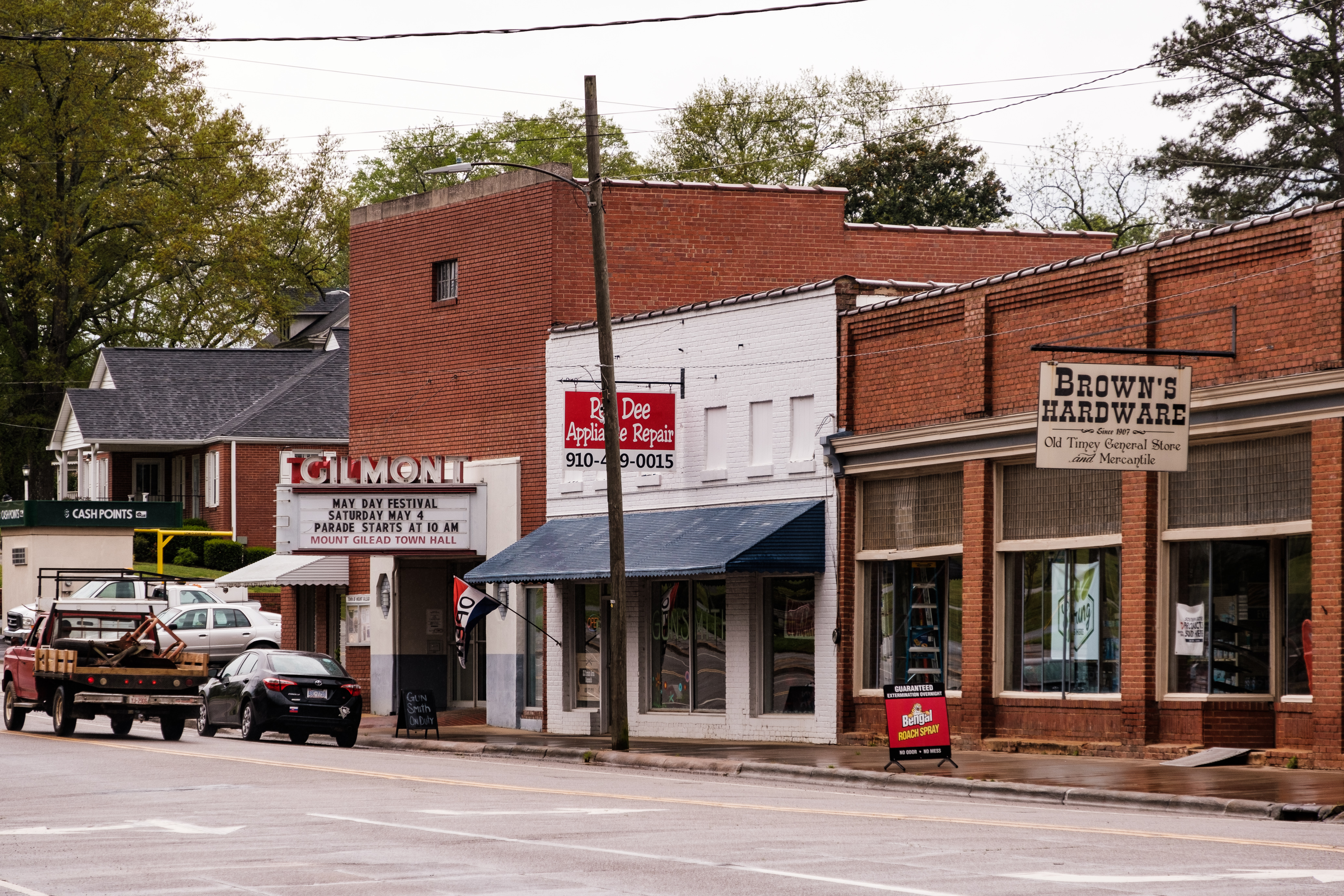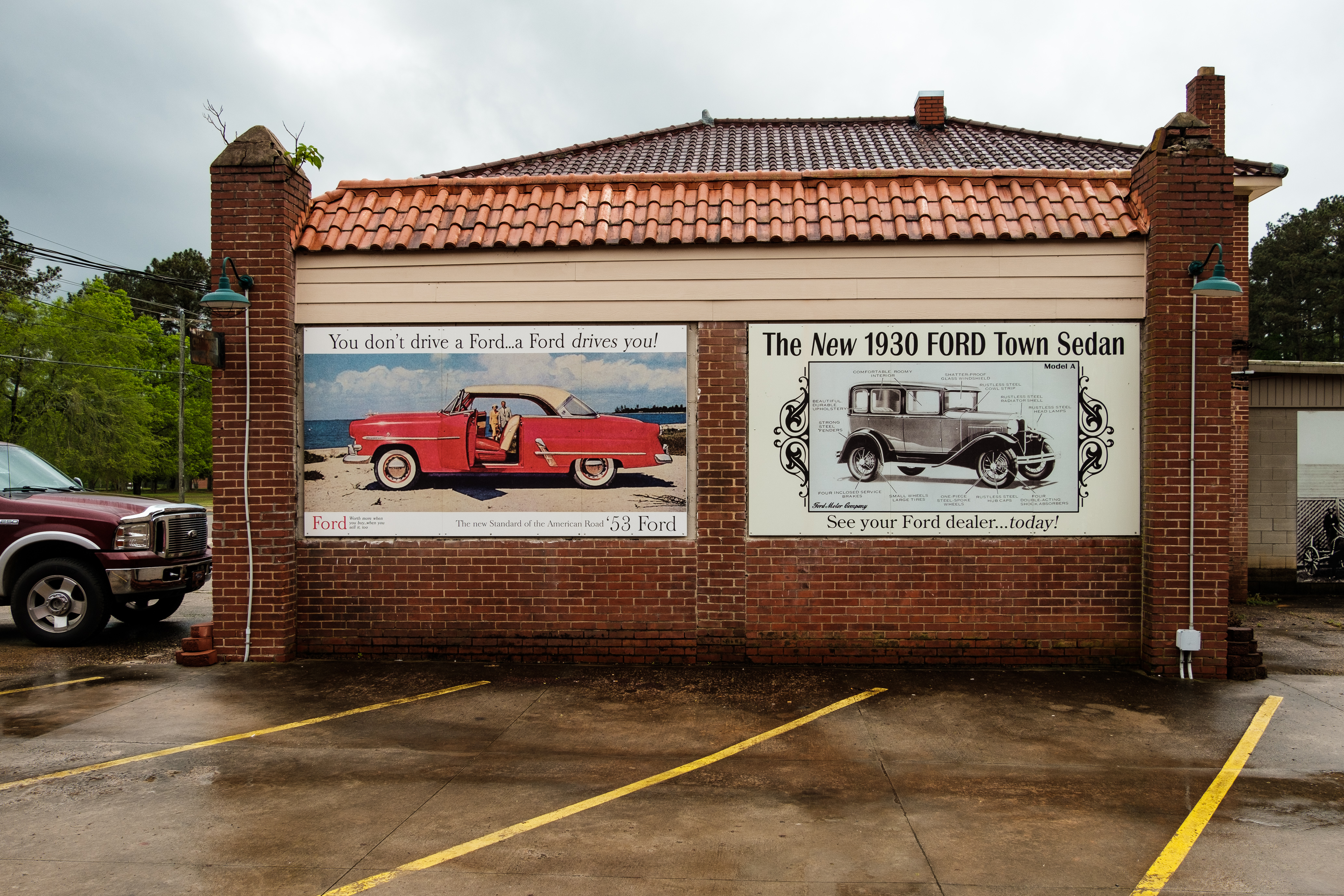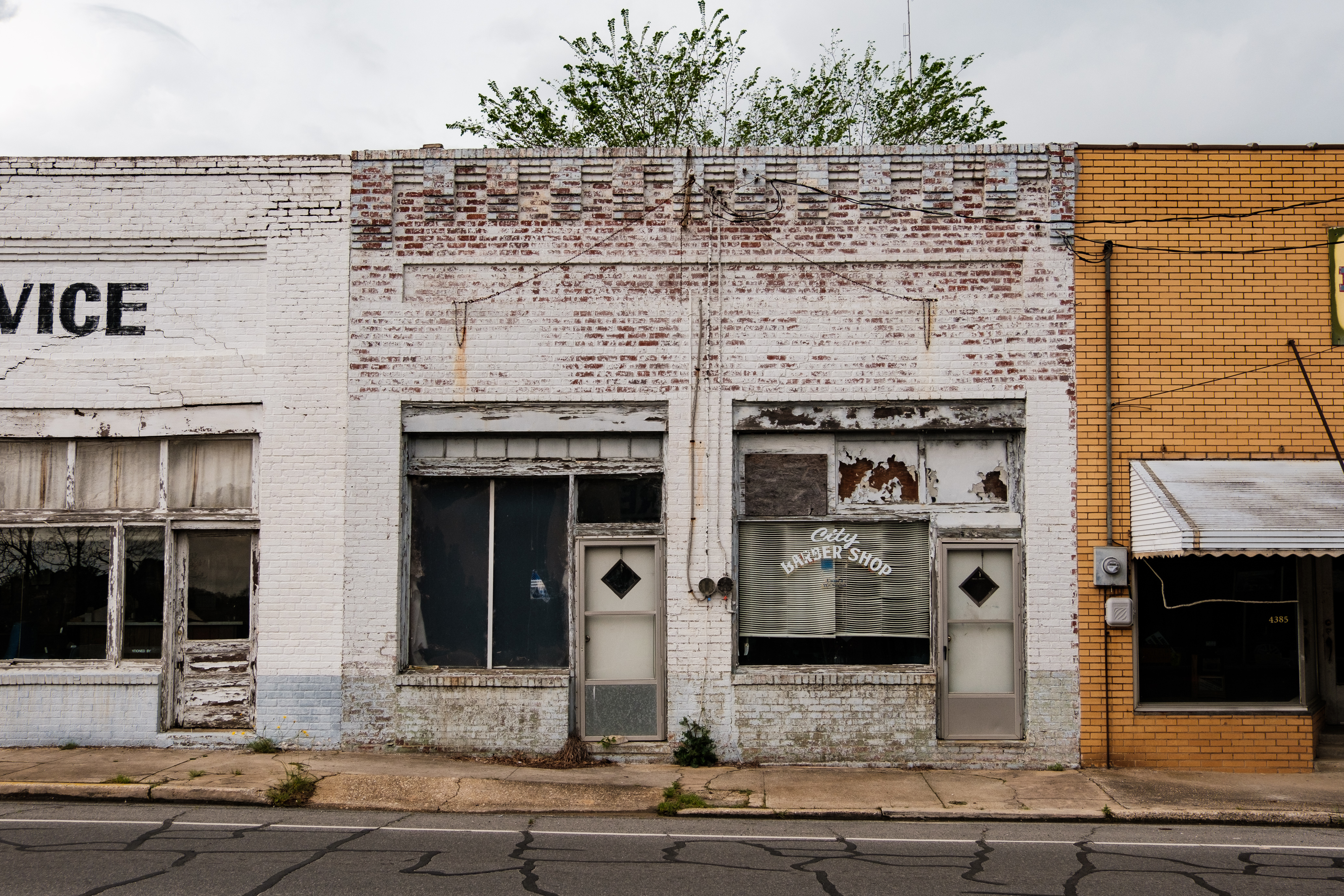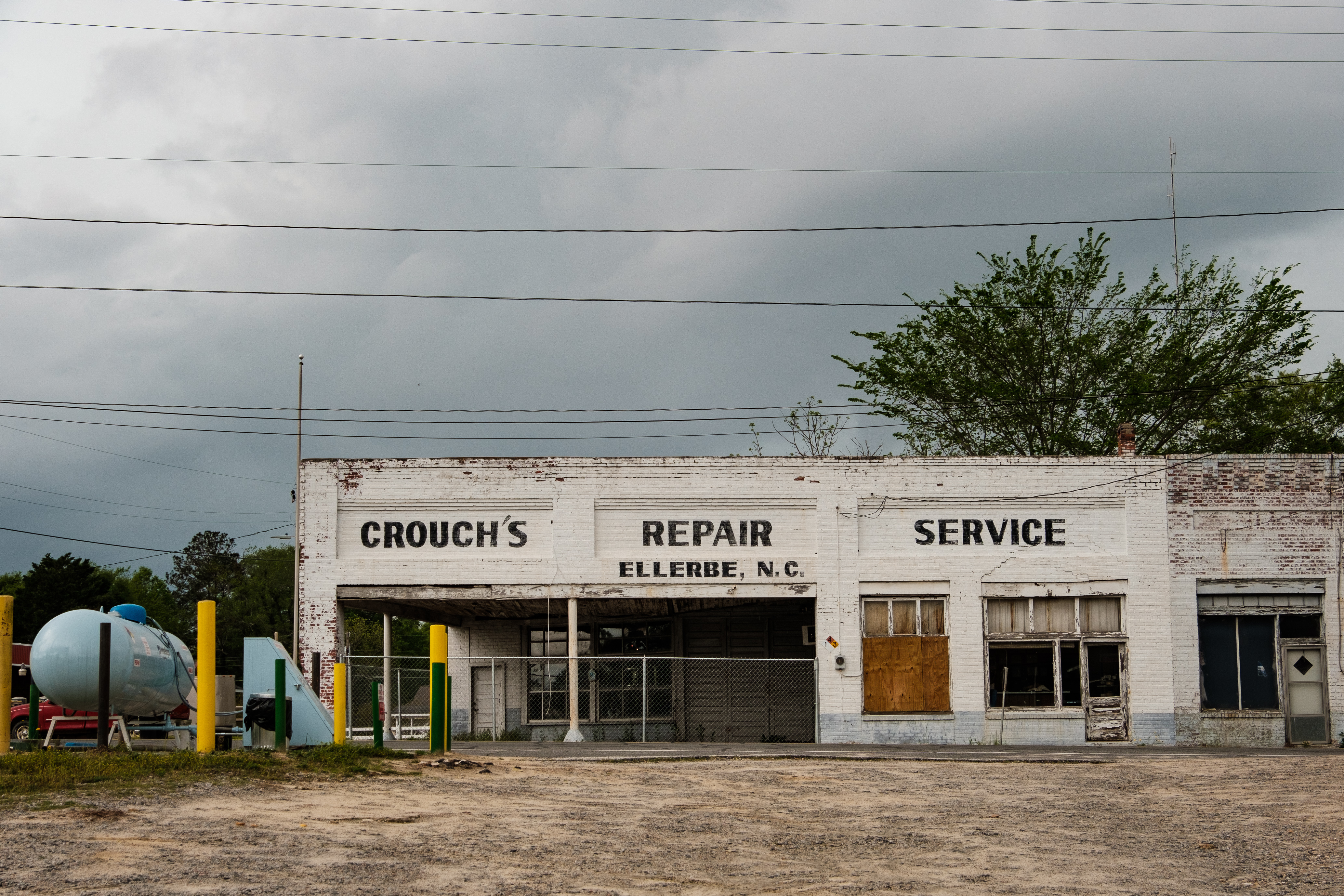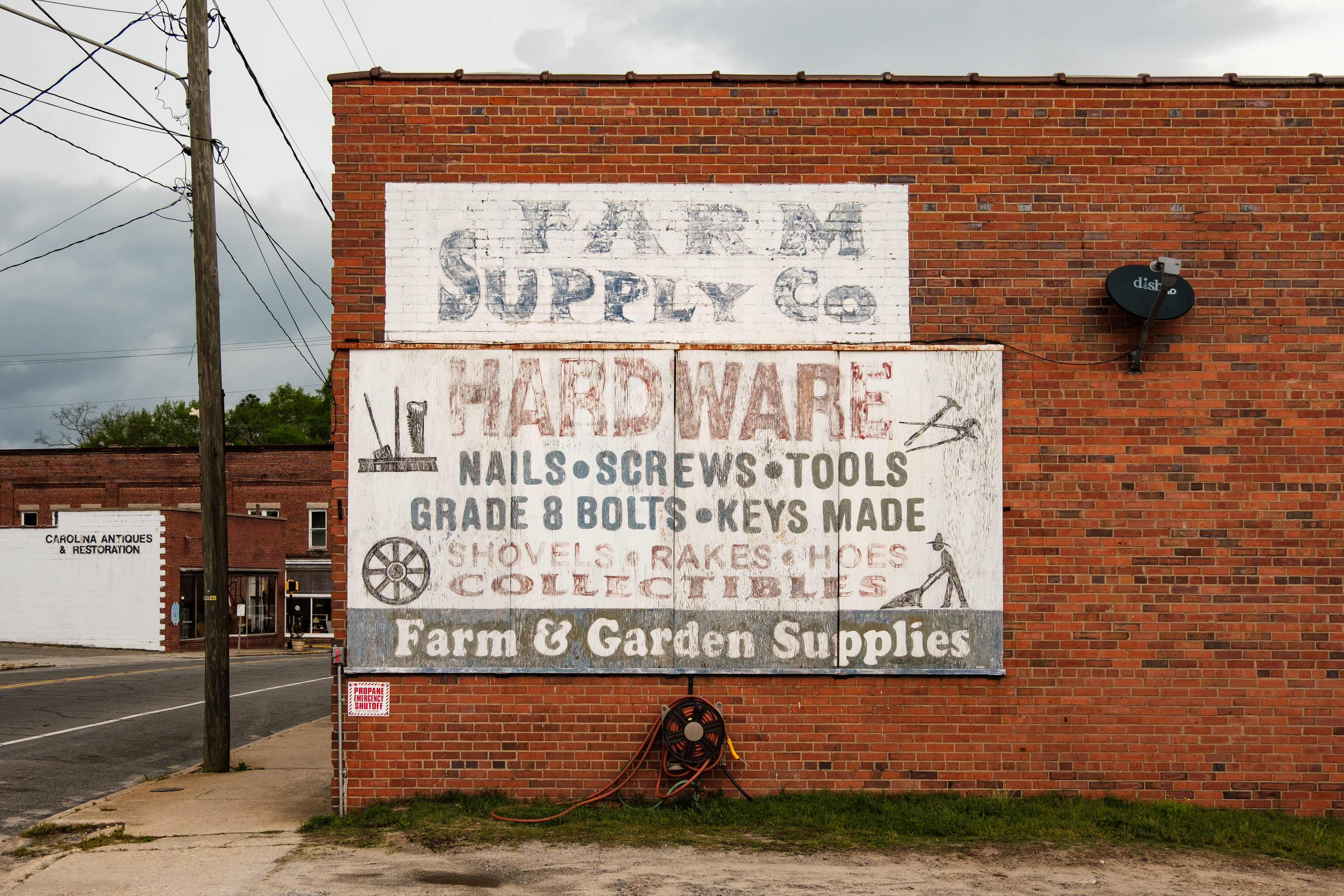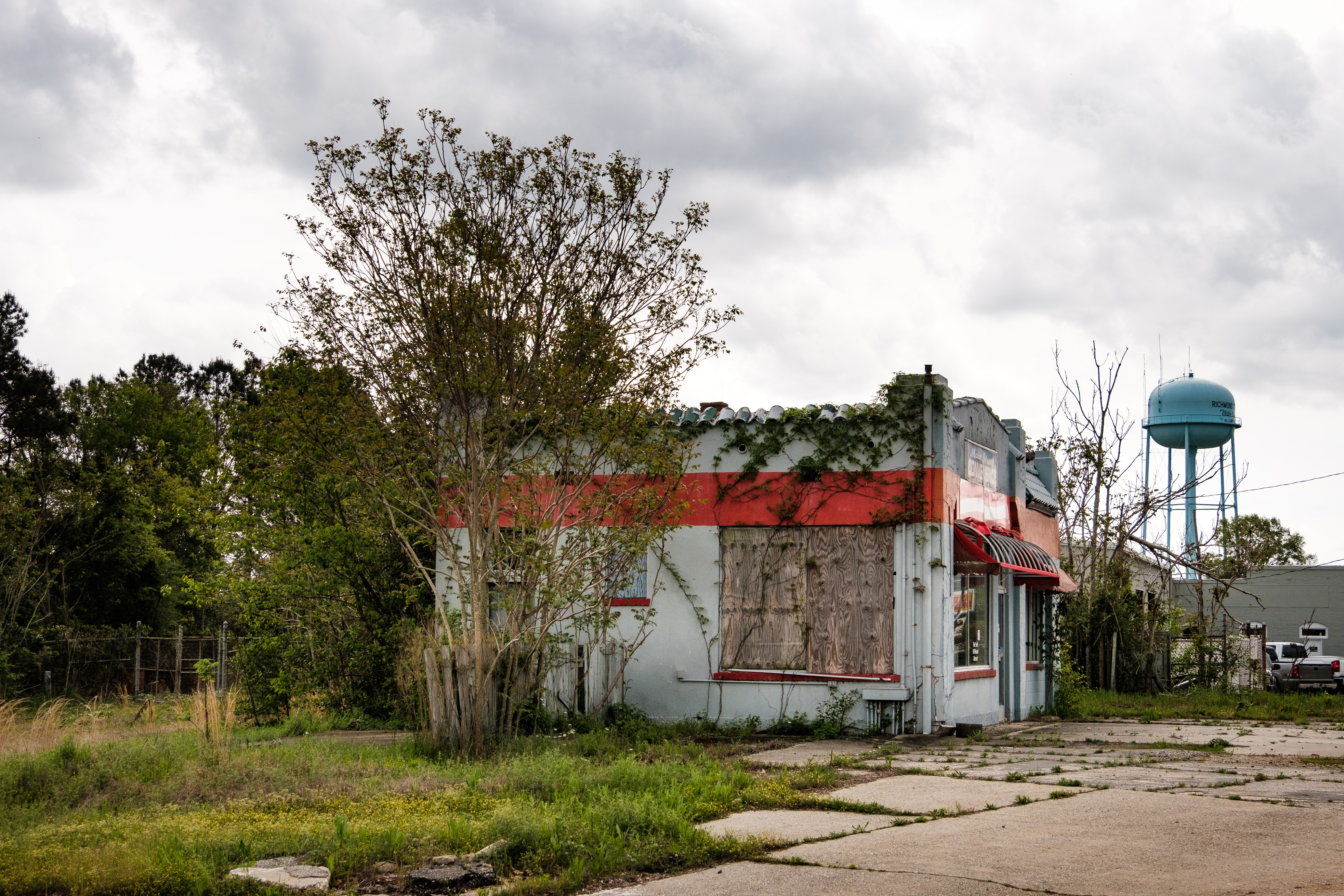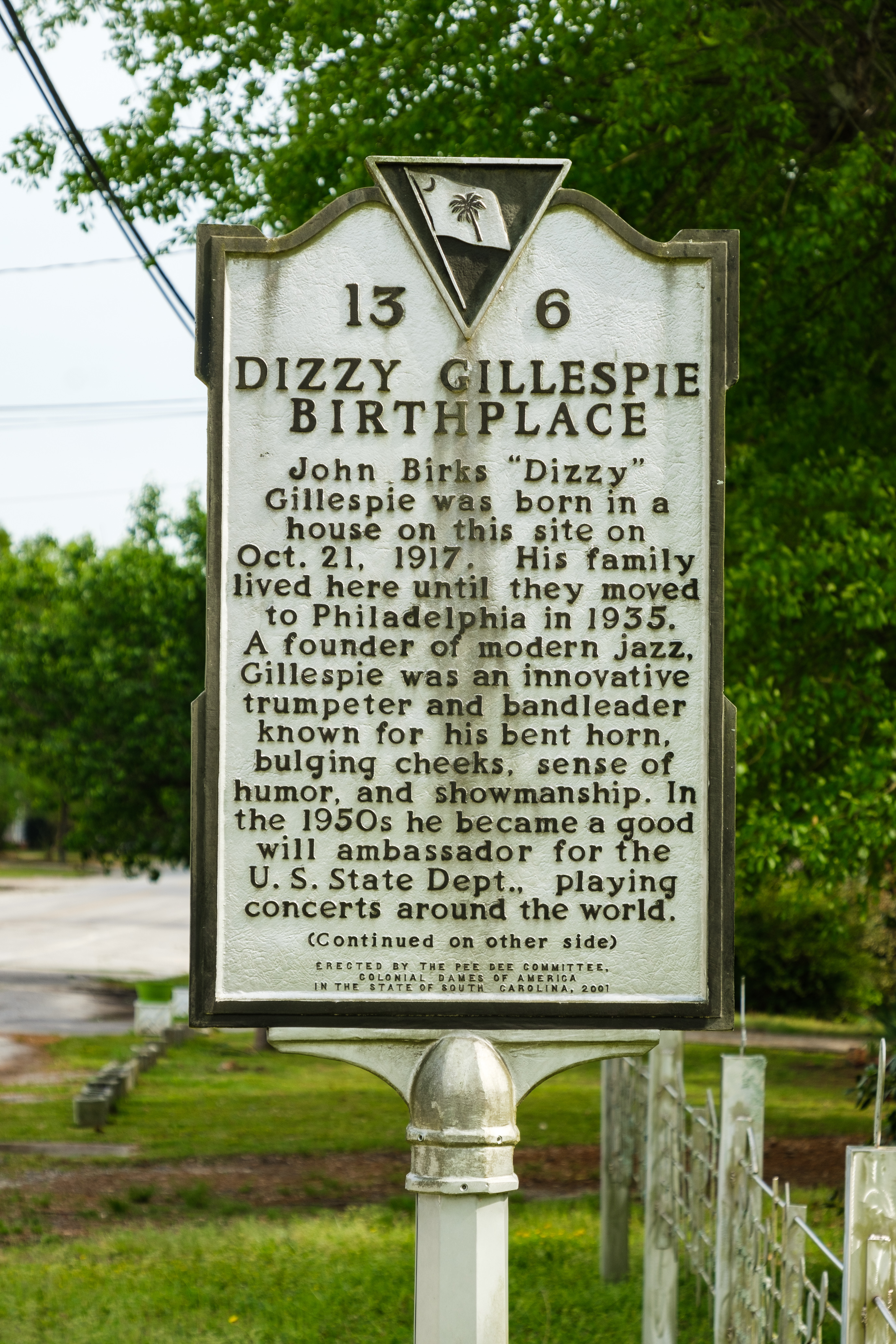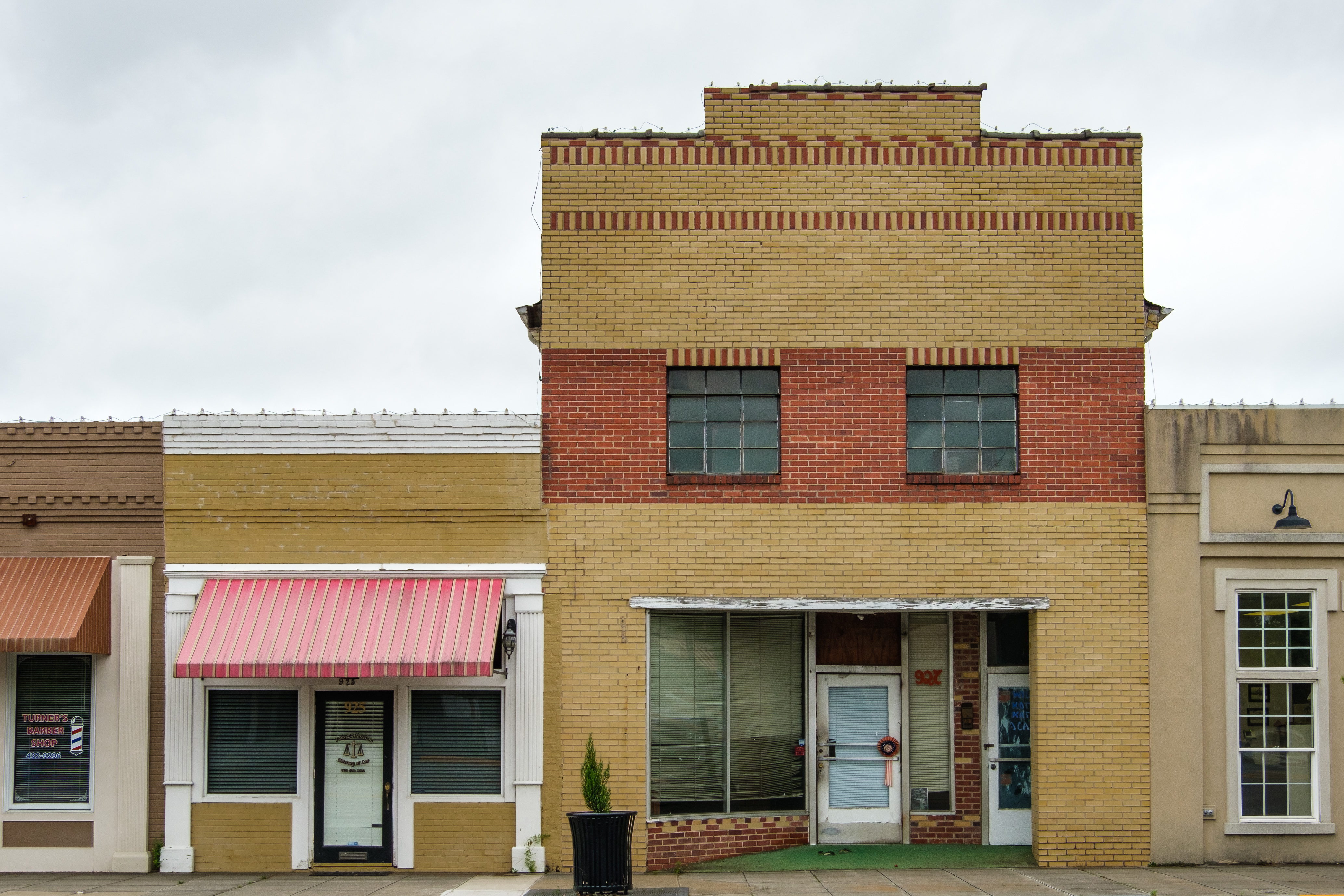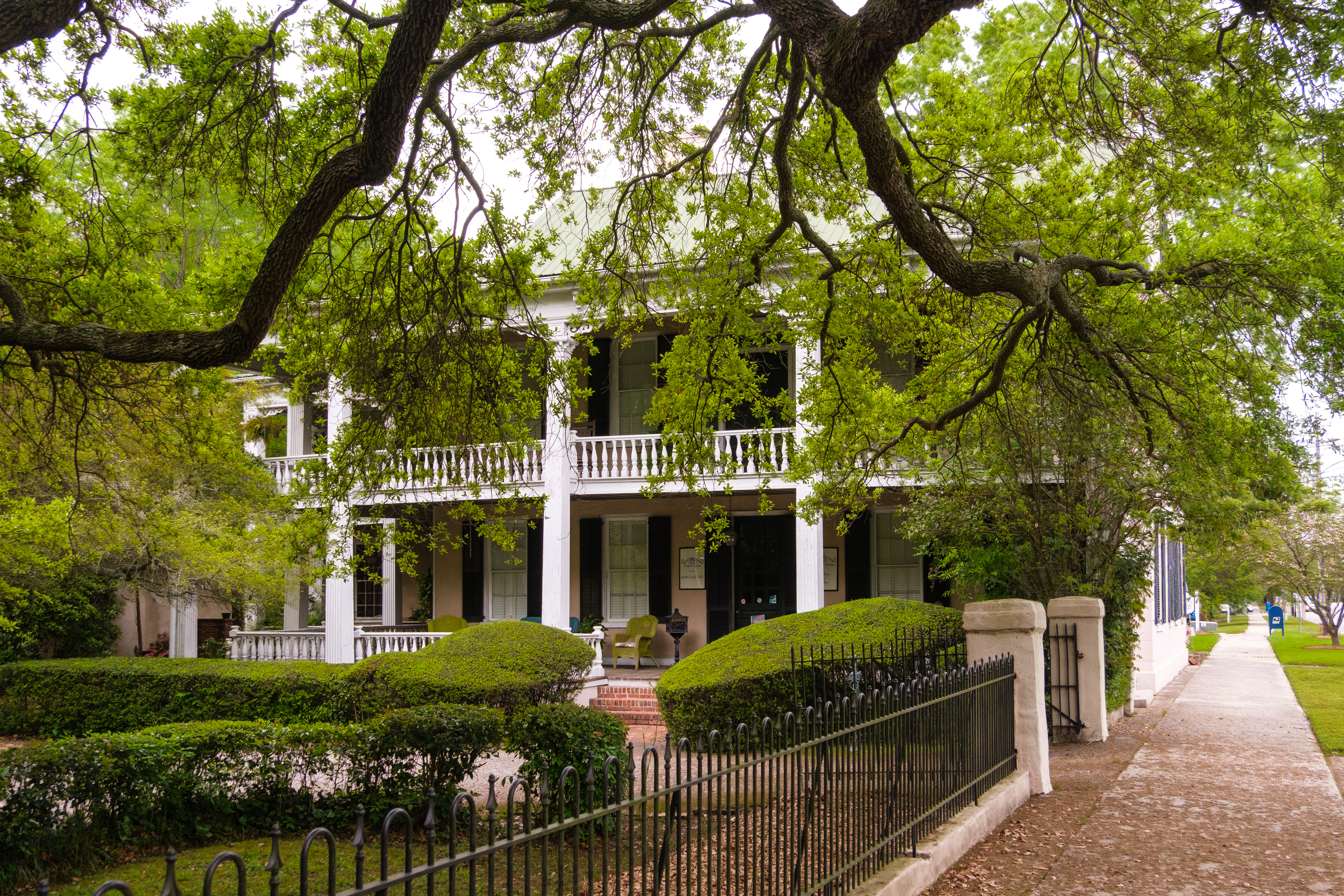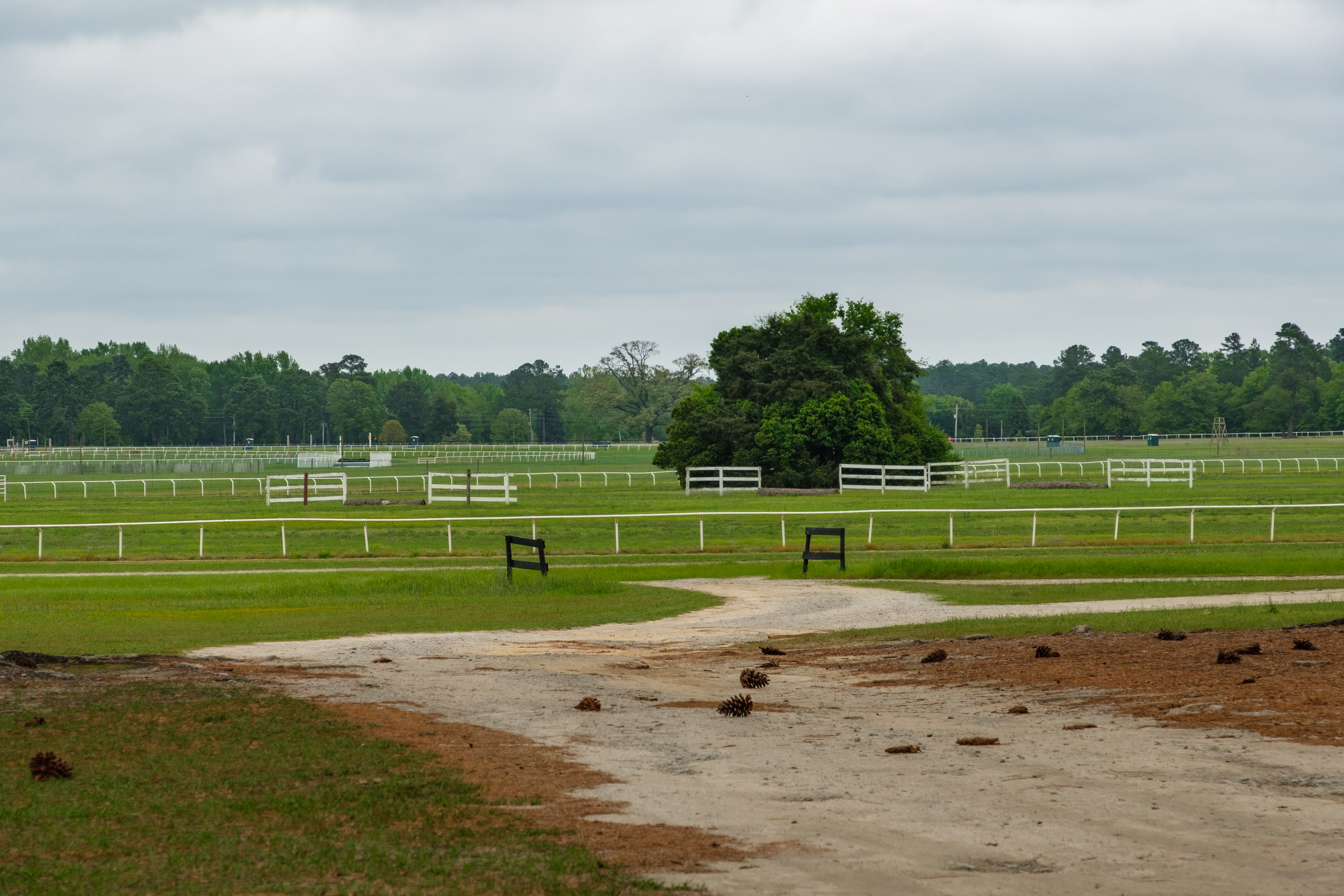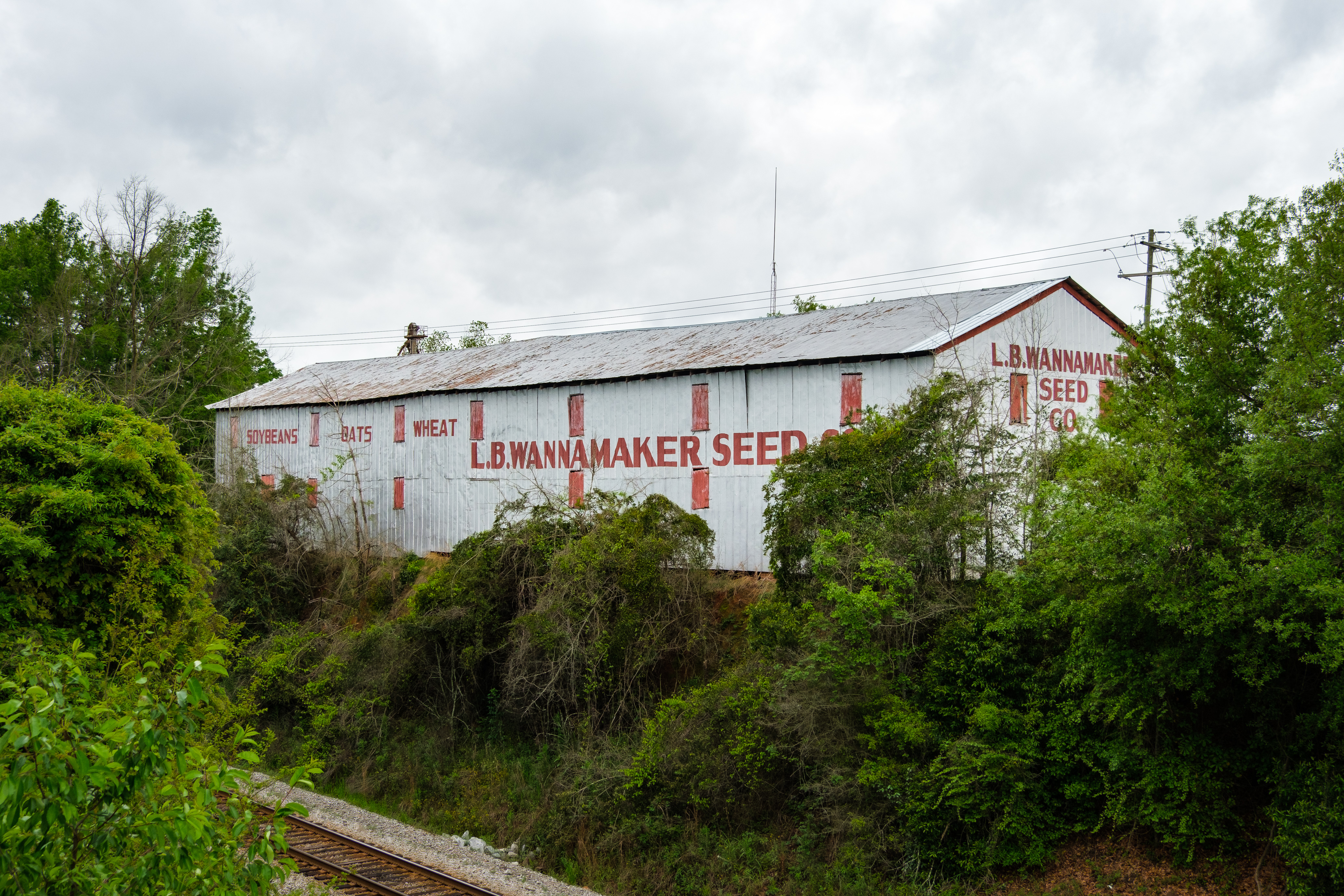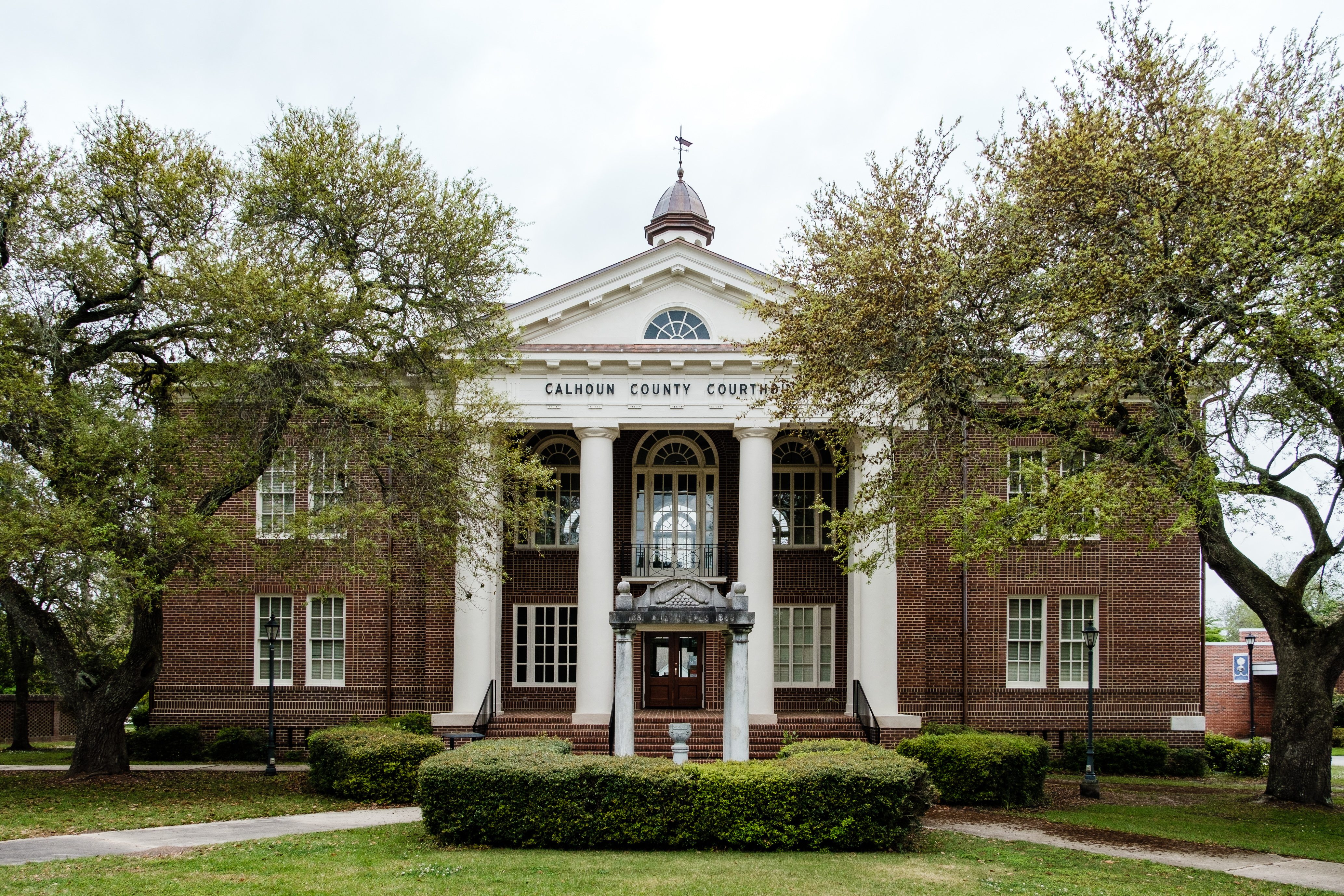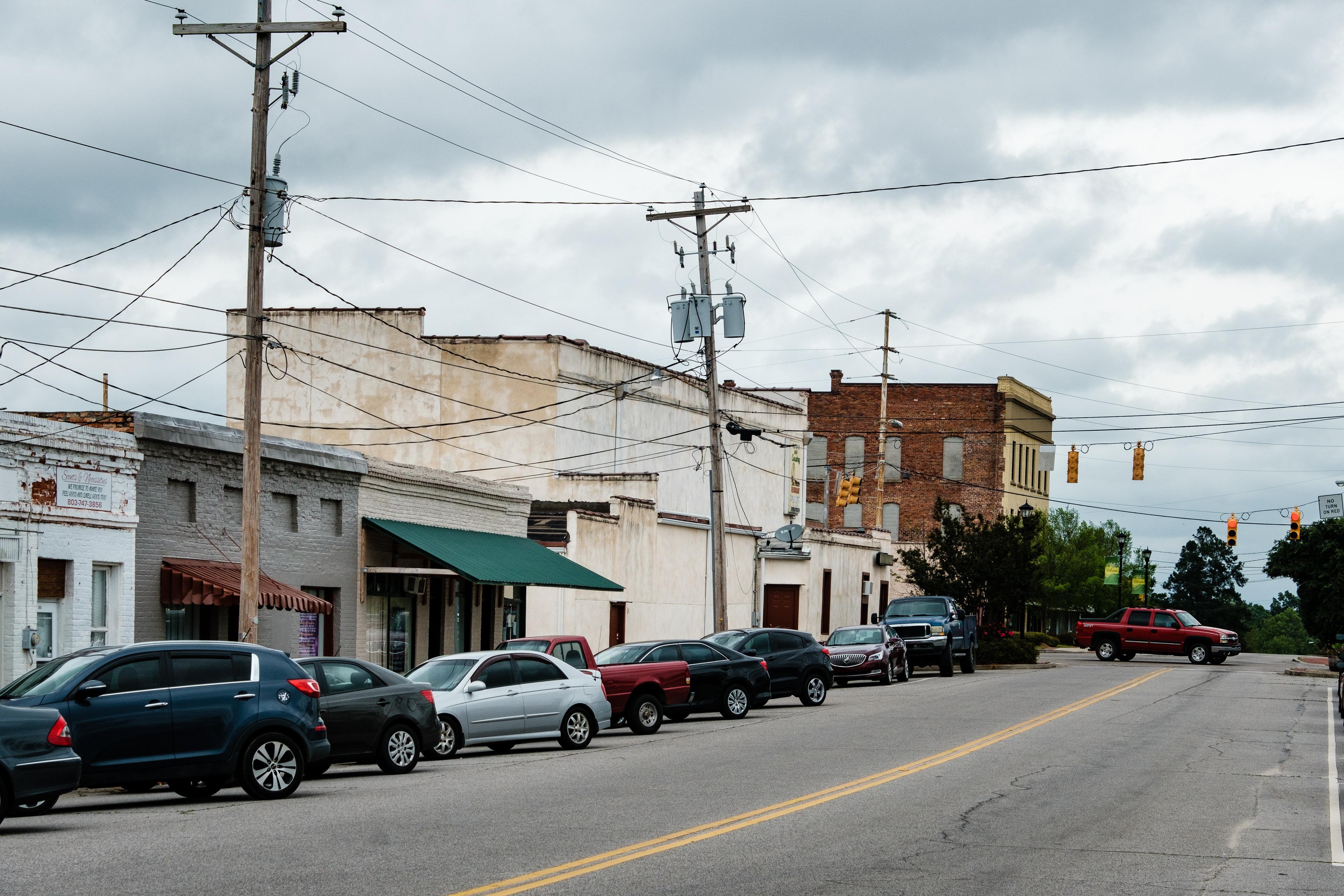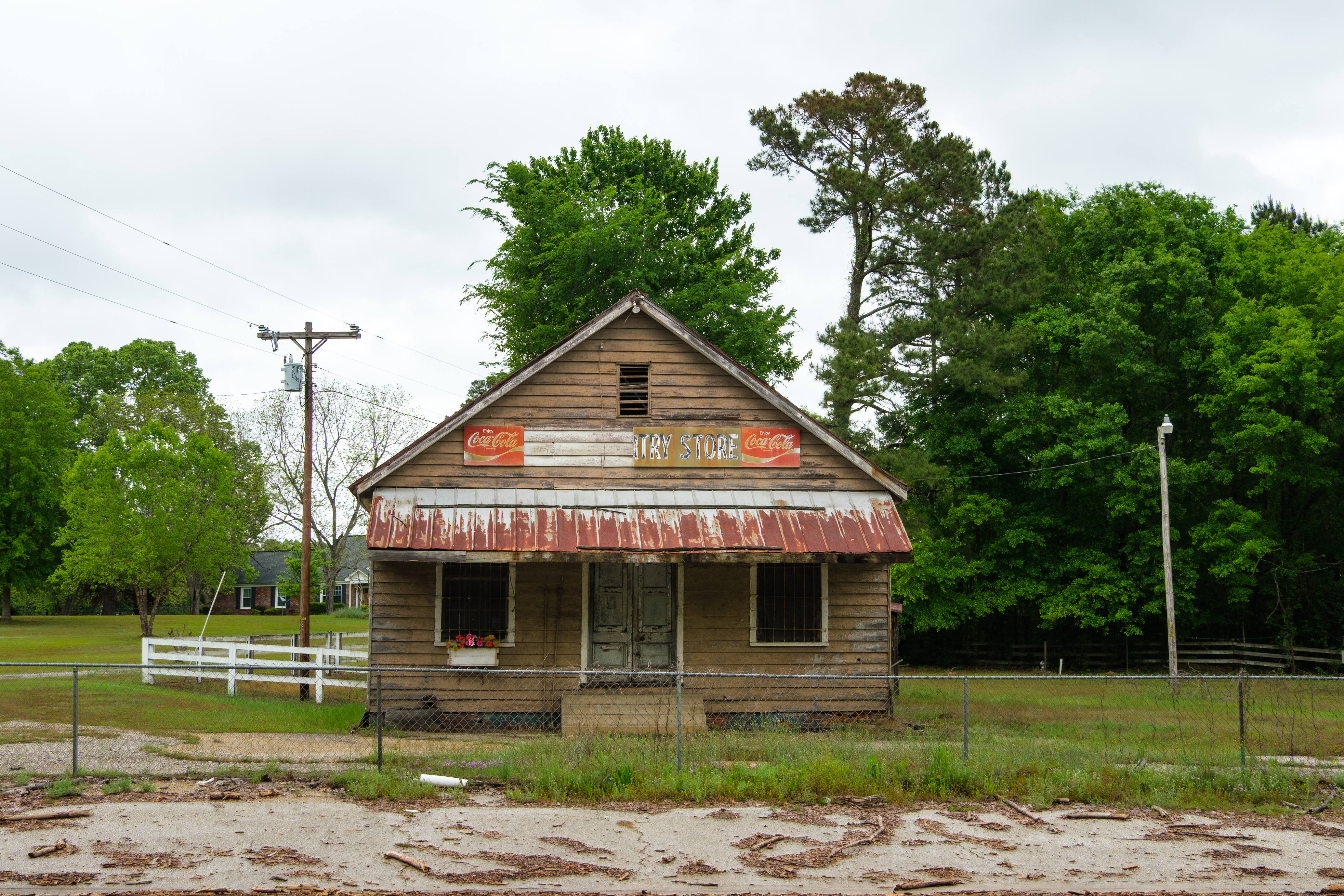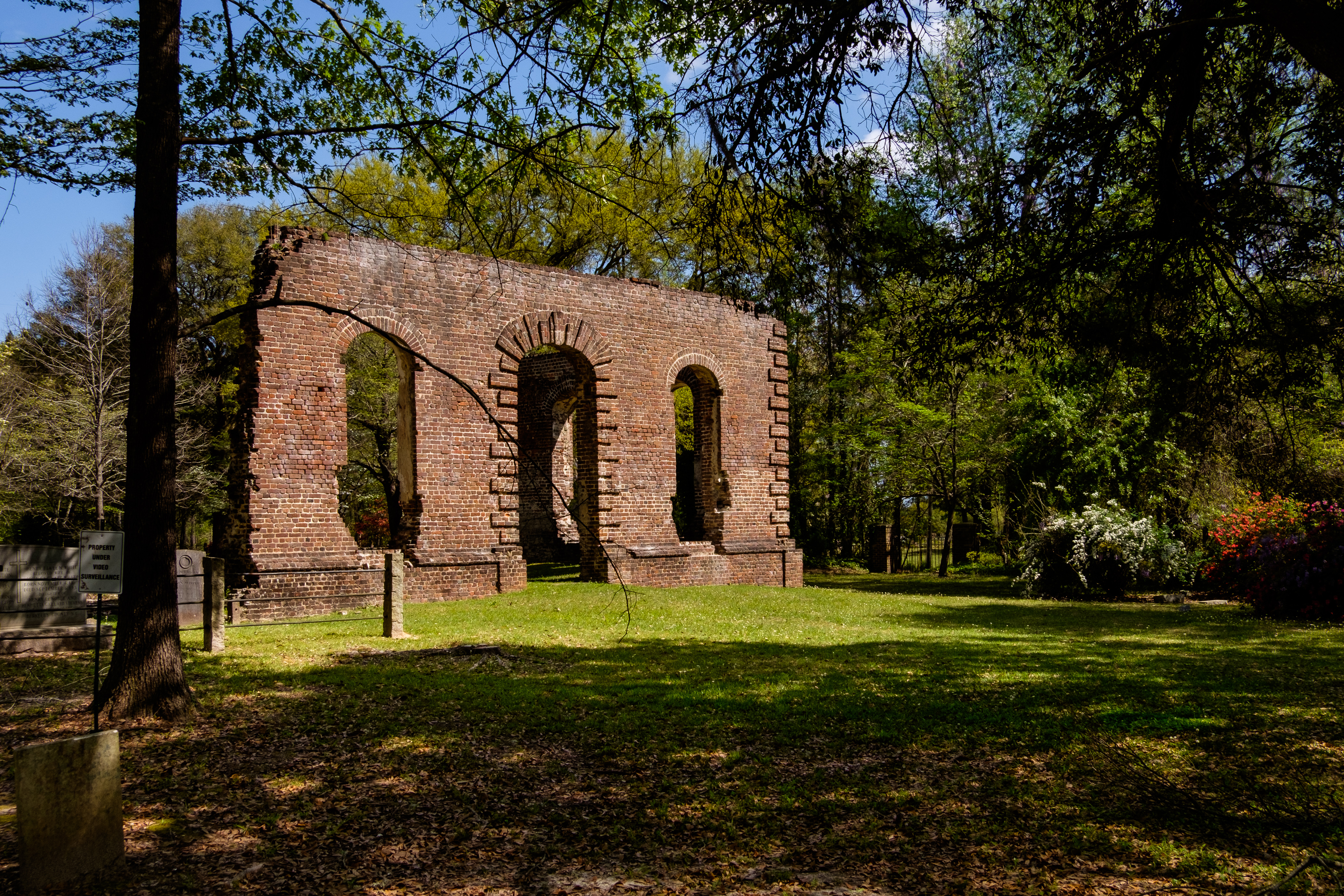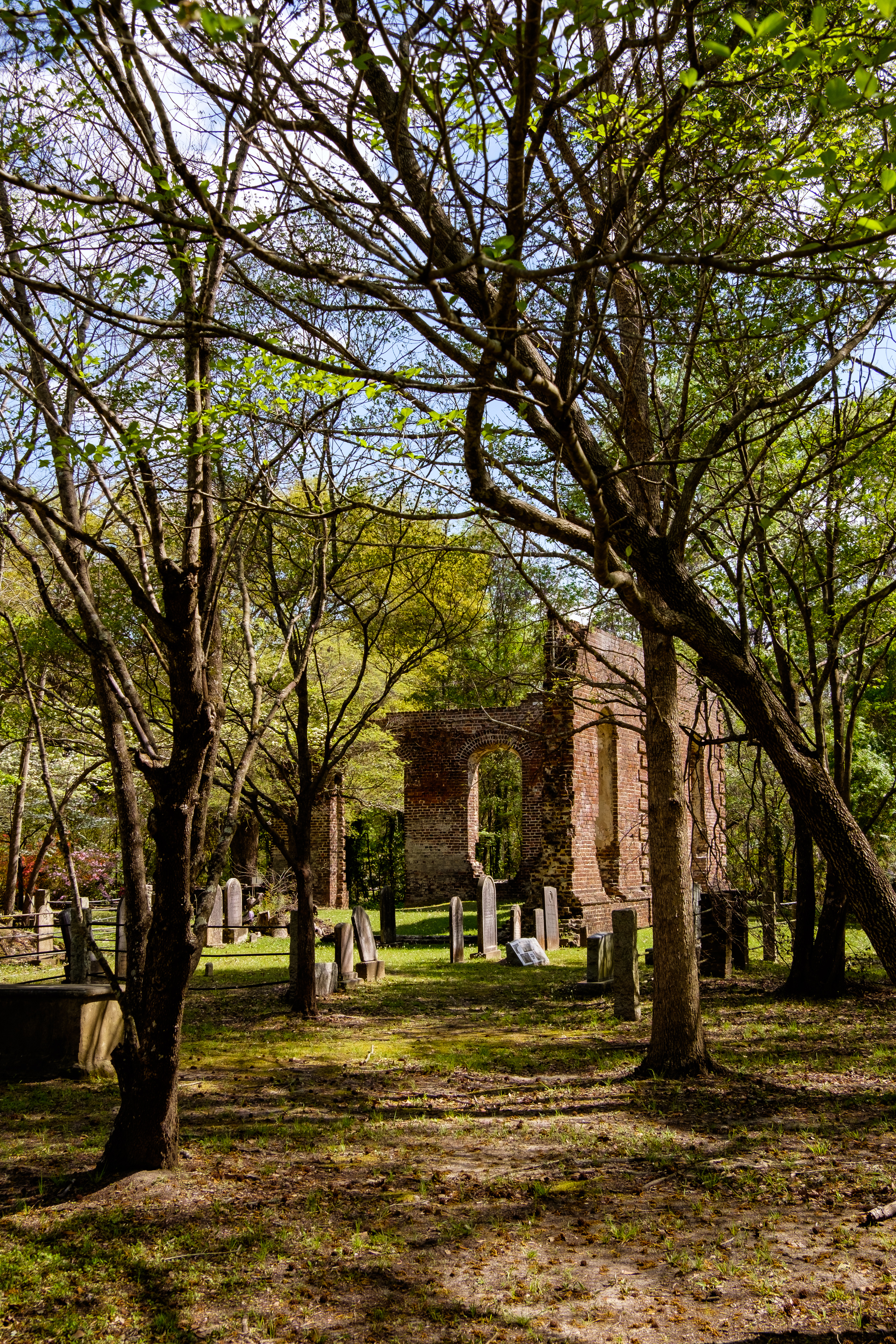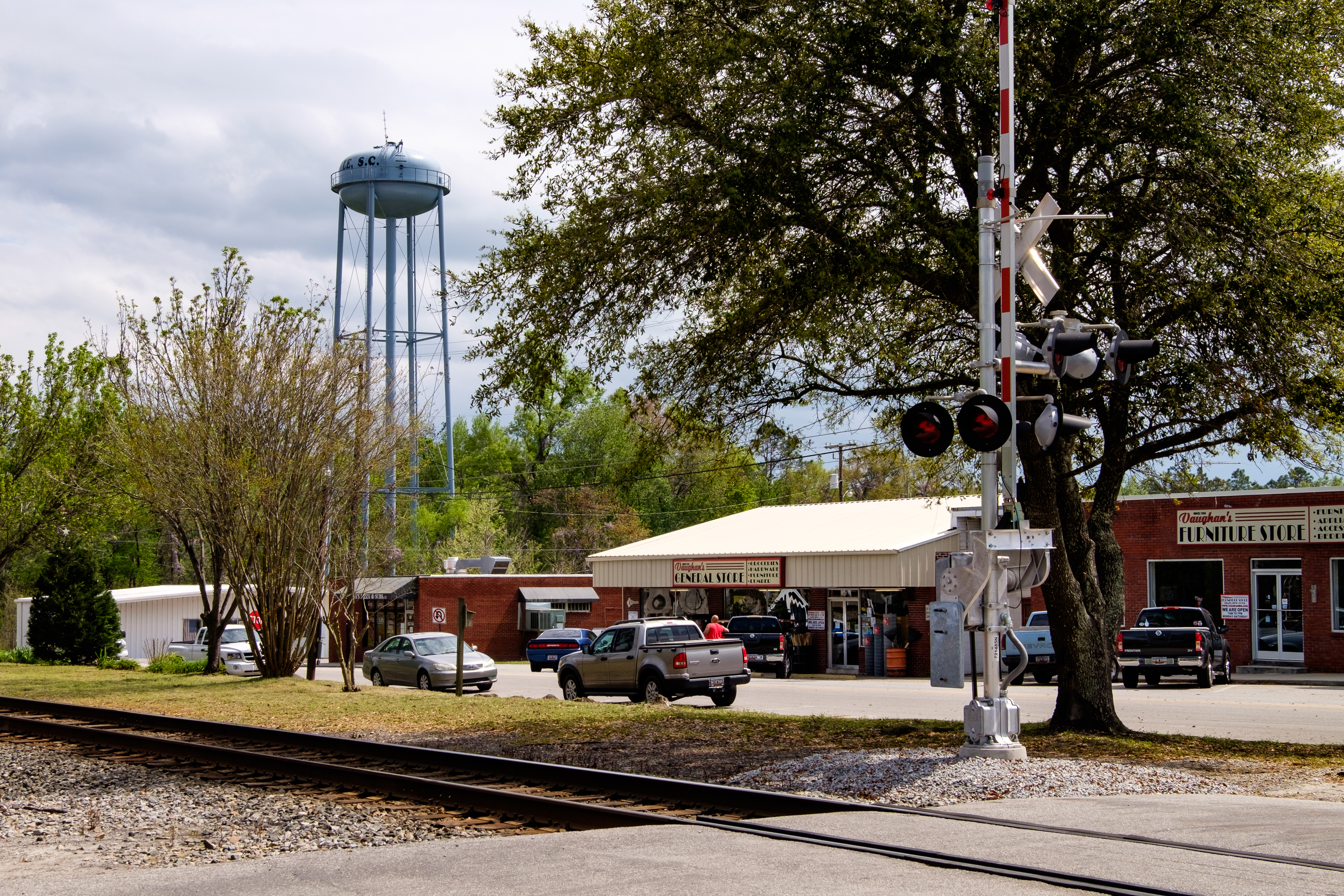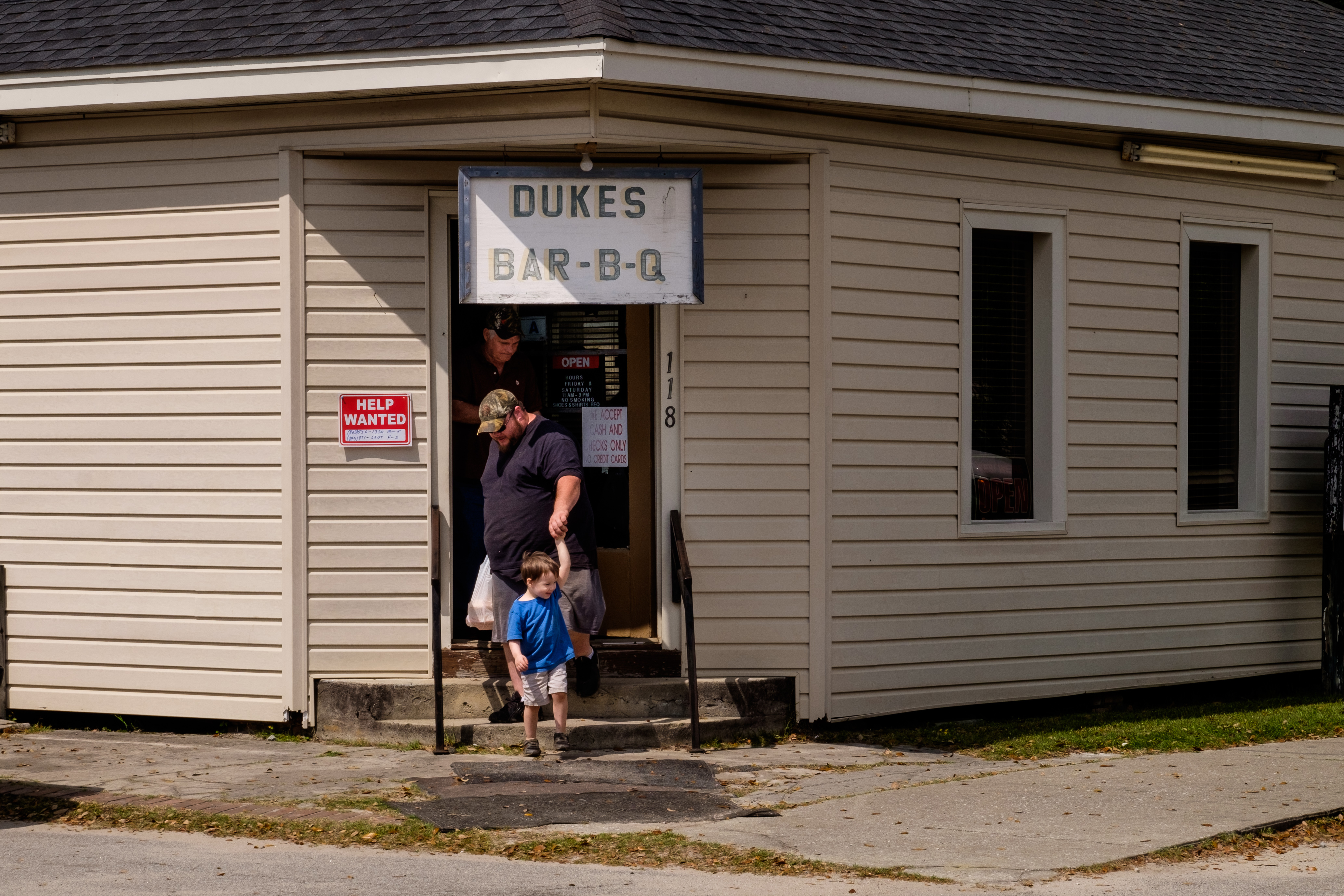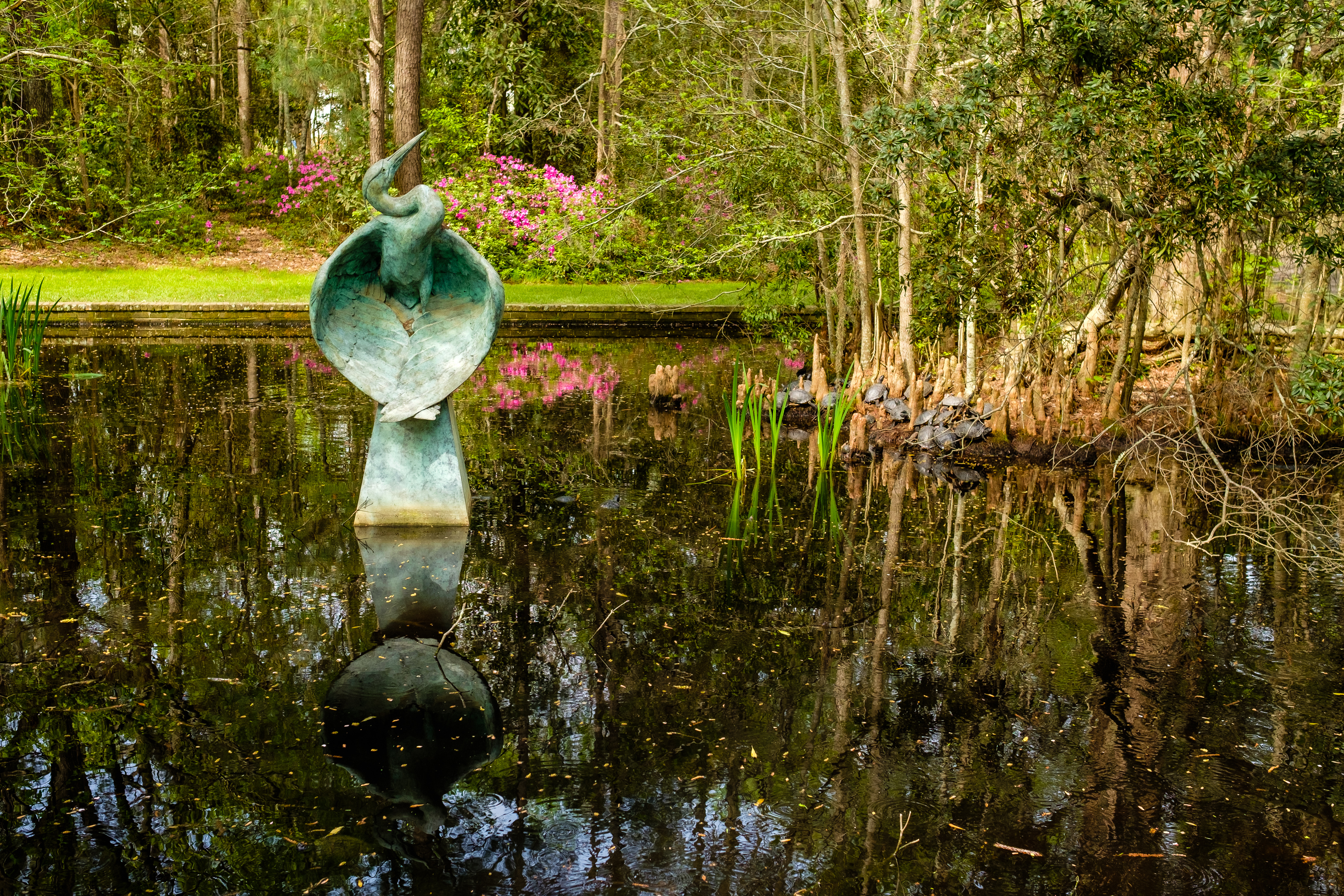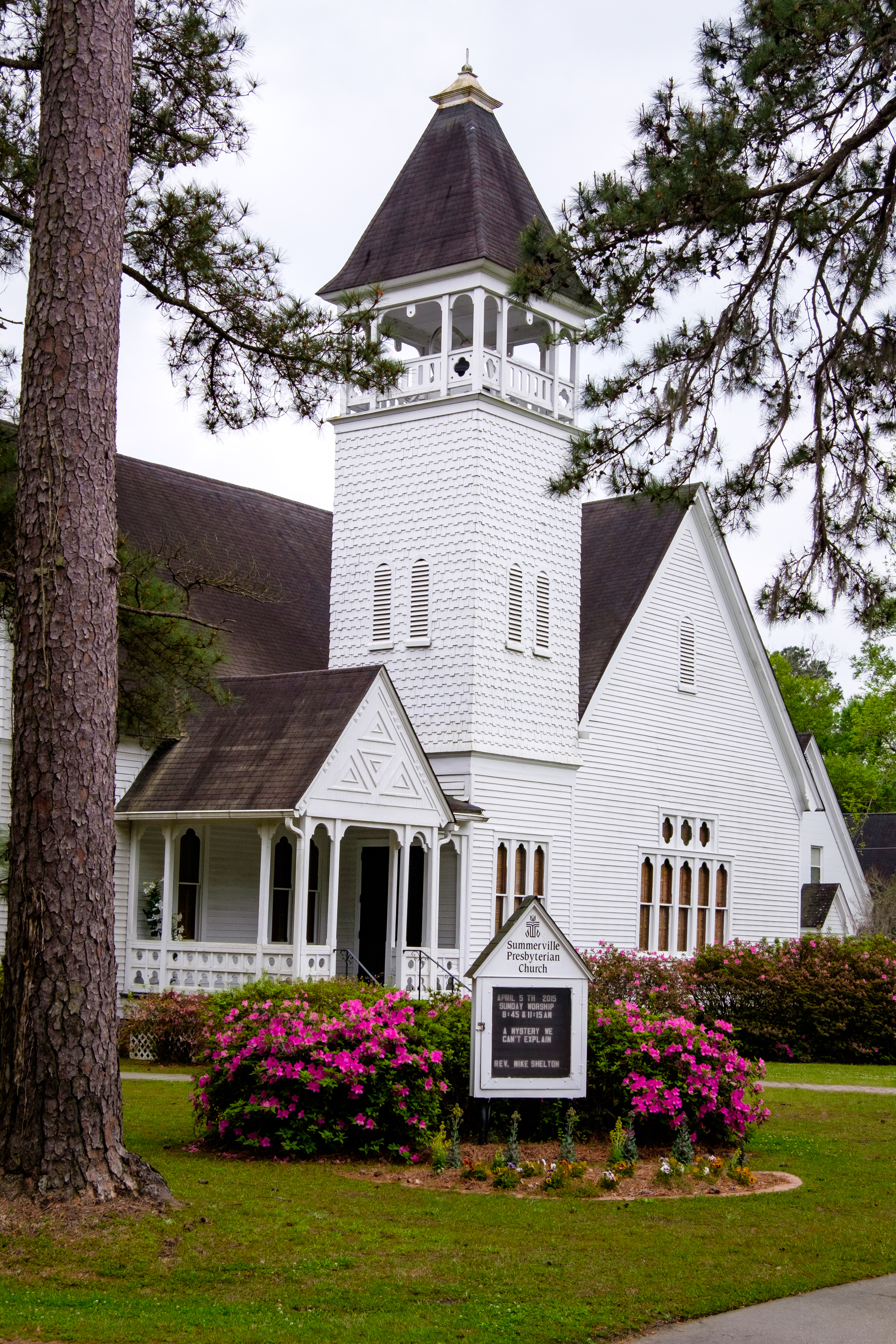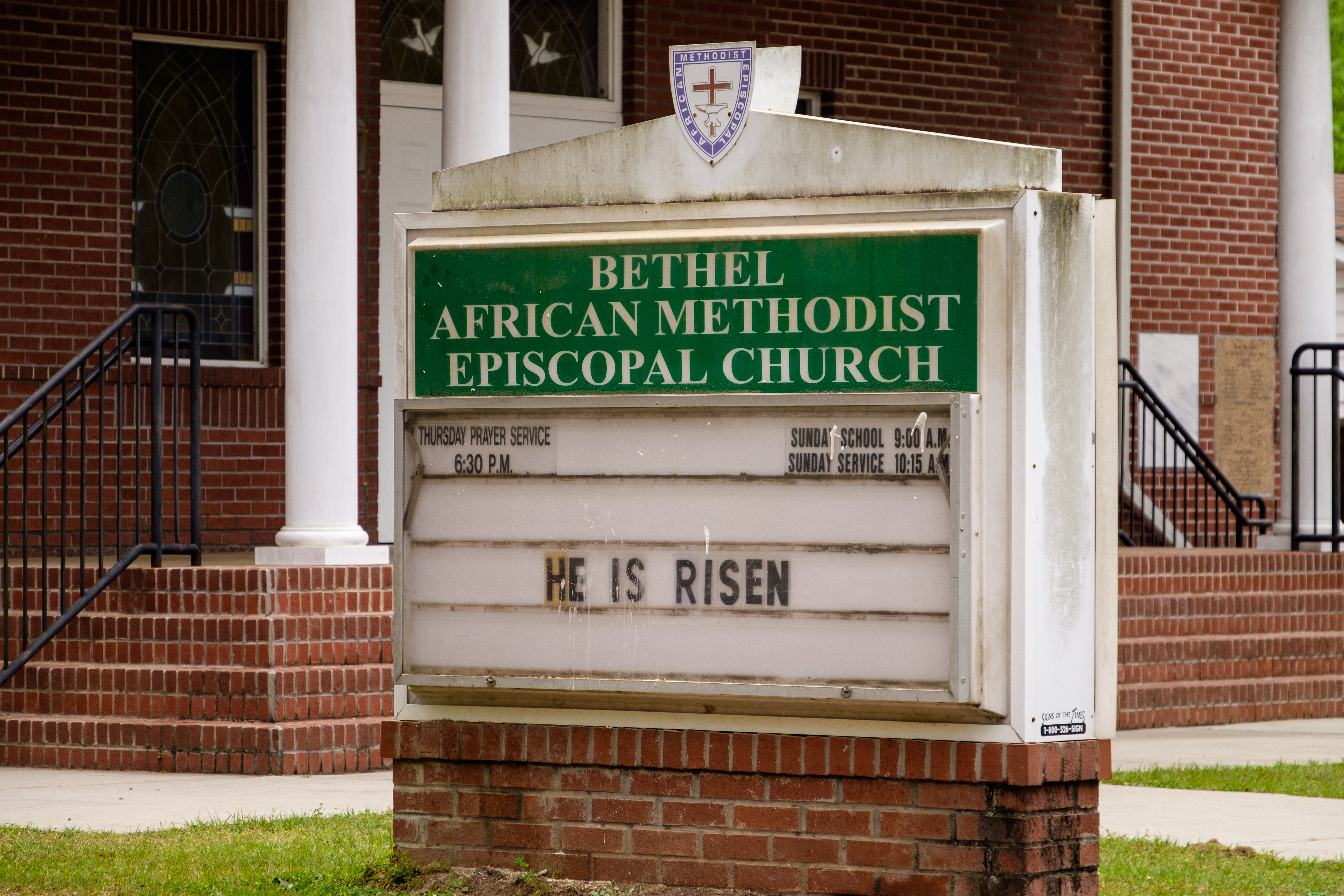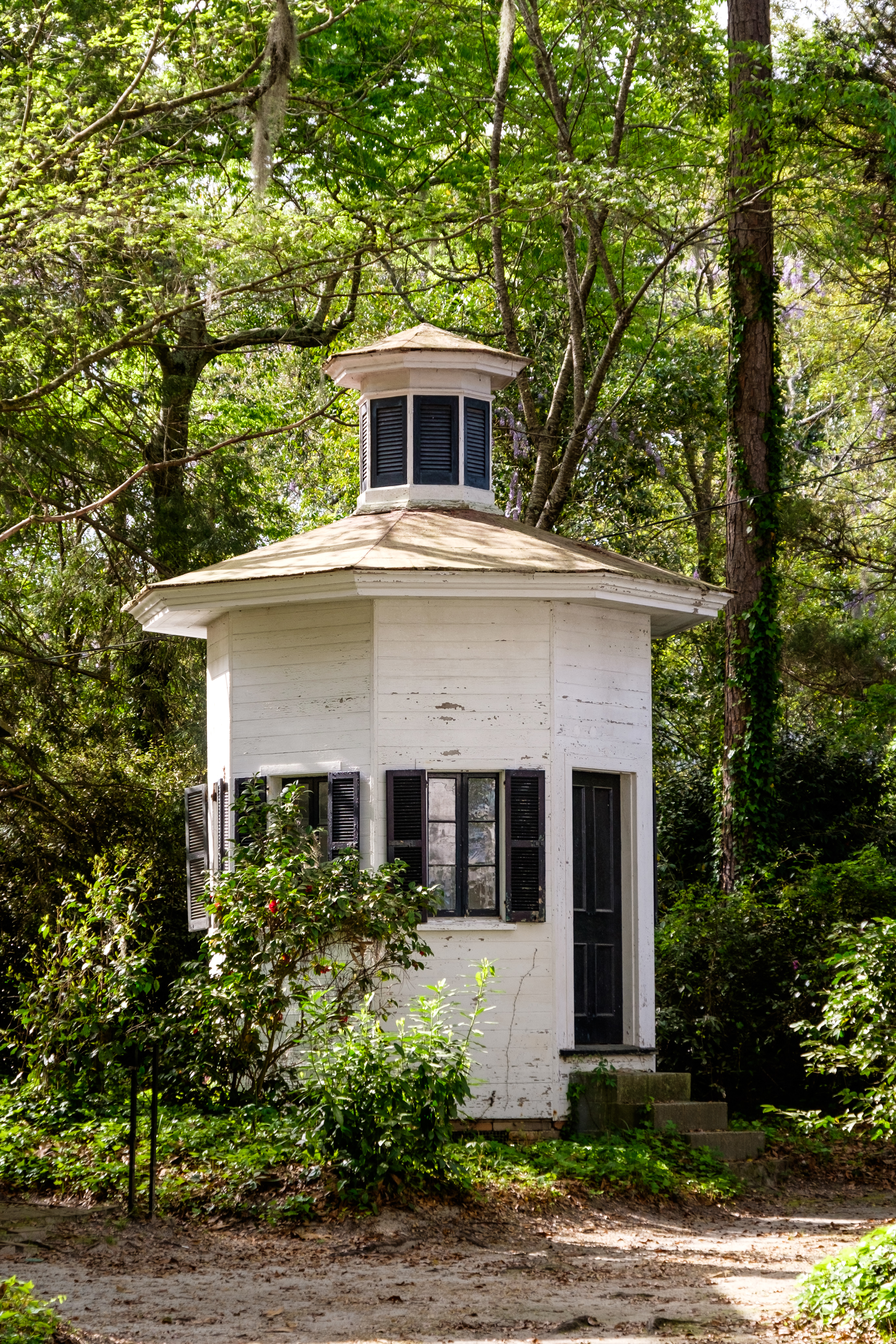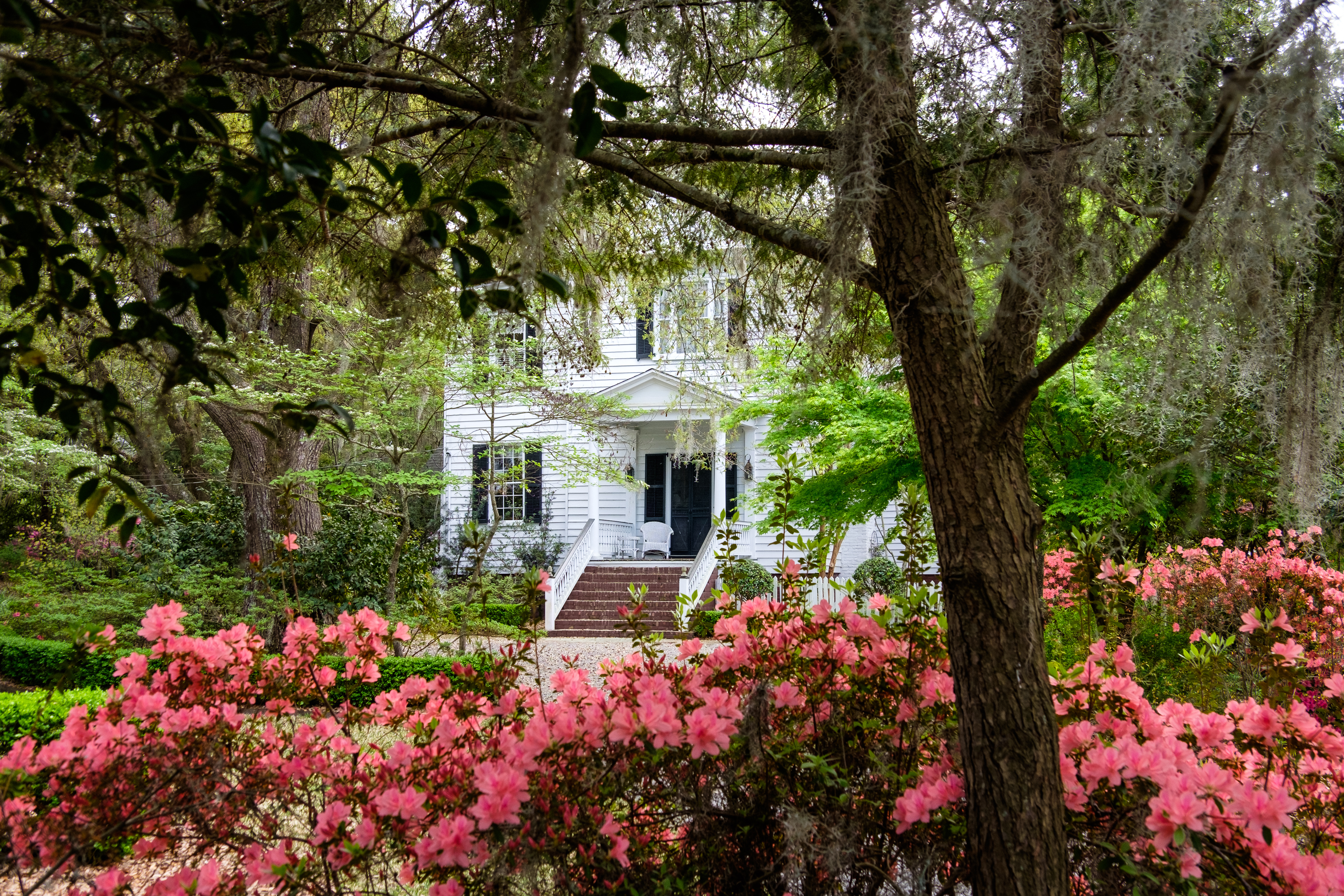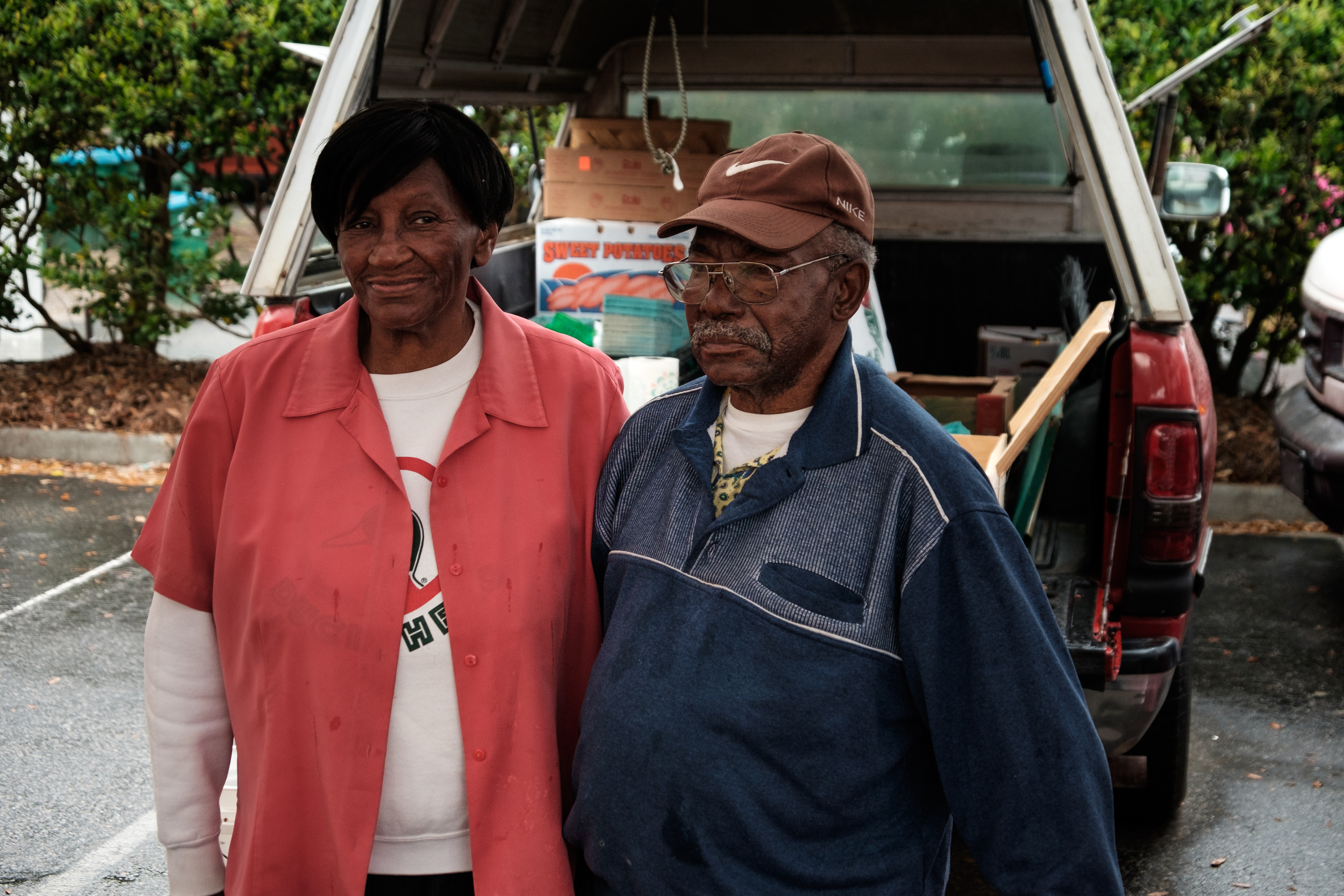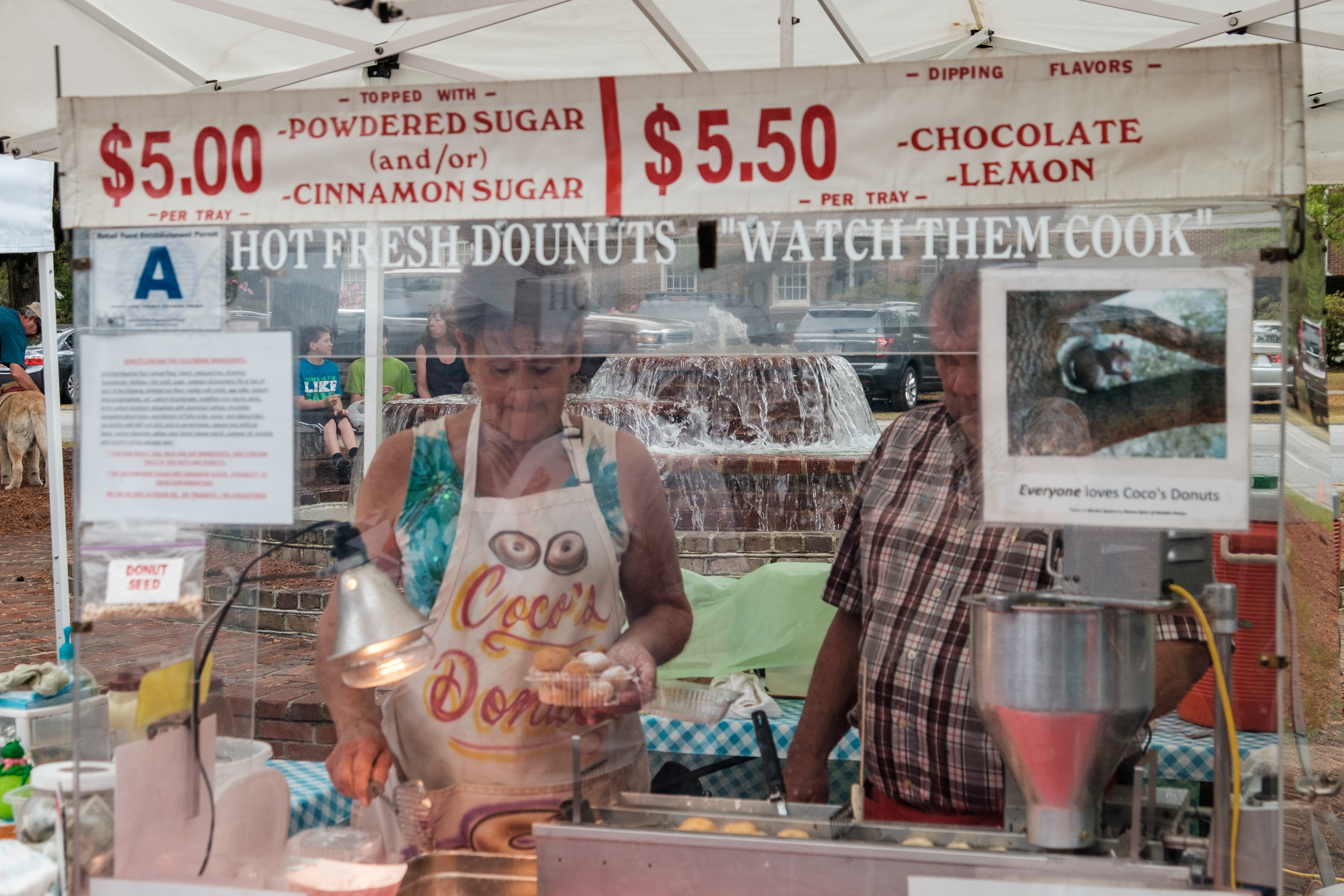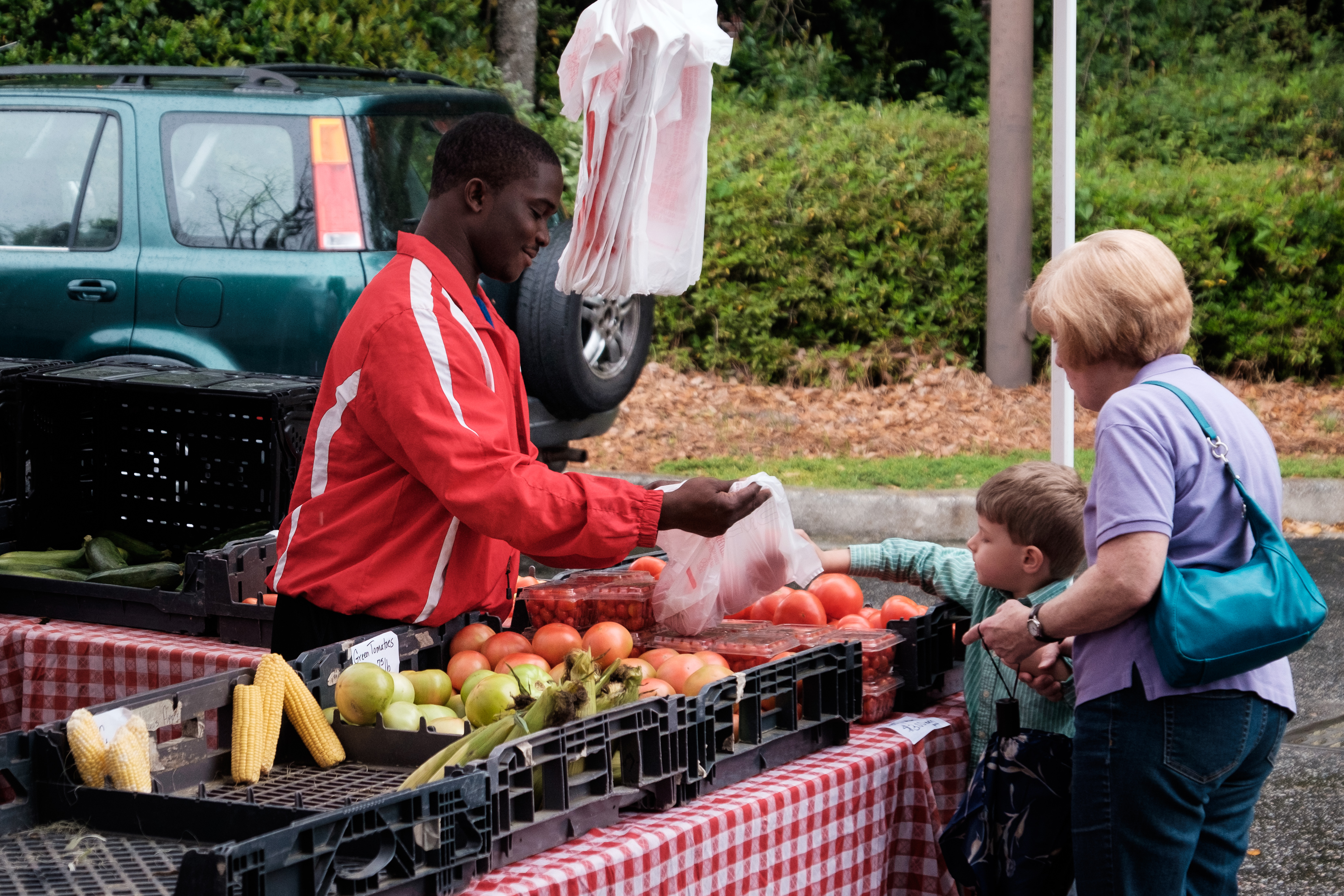The Pee Dee River in the North Carolina Piedmont to the Ashley River in the South Carolina Lowcountry.
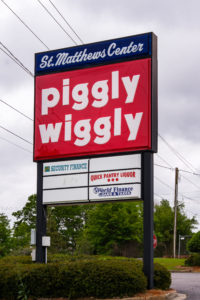 In this new post from my journeys in the American South we are going to cover about 200 miles starting out in the Pee Dee River Country in North Carolina and make it all the way to Summerville, South Carolina, near Charleston in the Lowcountry, which will be the end destination in this Southern road trip series before pivoting back northward.
In this new post from my journeys in the American South we are going to cover about 200 miles starting out in the Pee Dee River Country in North Carolina and make it all the way to Summerville, South Carolina, near Charleston in the Lowcountry, which will be the end destination in this Southern road trip series before pivoting back northward.
First, continuing my drive south from the previous overnight in Winston-Salem let’s make a stop in Mt. Gilead, in Montgomery County, North Carolina, in the Pee Dee River region. One of those punching-above-its-weight country towns I encounter from time to time on my journeys. A town with the secret sauce. Wonderful. It’s at the foot of the Uwharrie Mountains, the oldest mountain range in North America. As you will see in the photos, the old Gilmont Theatre is now the Town Hall. Little country stores, antiques, some very pretty churches – a nice place by all appearances.
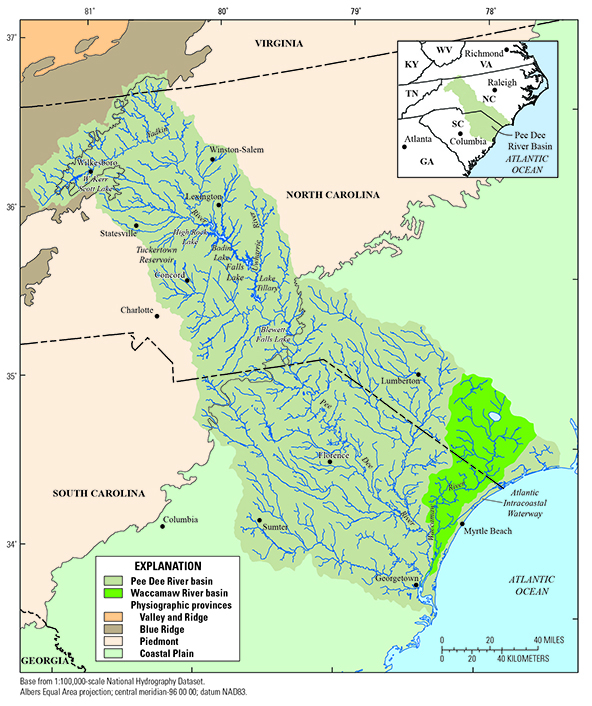
Speaking of sauce just outside of Mt. Gilead is one of the best BBQ stops I made on the entire drive this year (and there were quite a few of them): Lefler’s Place (since 1922). It’s said to have the last remaining outdoor, wood burning barbecue pit in the county. In the photo below, you can see it just to the left of the white truck. This place was the real deal. The kind of country lunch stop one dreams of. Great food, fine conversation and a warm welcome by the owners, Jimmy and Laura Anderson. Five stars.
As I approached the South Carolina state line it got a bit scruffier. Ellerbe, North Carolina, seemed to be struggling with a lot of closed businesses. It looked like most of the little downtown was boarded up. I googled it – Ellerbe (of all places) was where André the Giant (André René Roussimoff), the late French professional wrestler and actor, lived in retirement for many years at a ranch he owned there. I didn’t expect that factoid. After his death his ashes were scattered there. (He played Fezzik in one of my all time faves, the 1987 film The Princess Bride – there’s our movie reference for this post.) I haven’t seen it, but Ellerbe is supposed to feature in HBO’s 2018 André the Giant documentary.
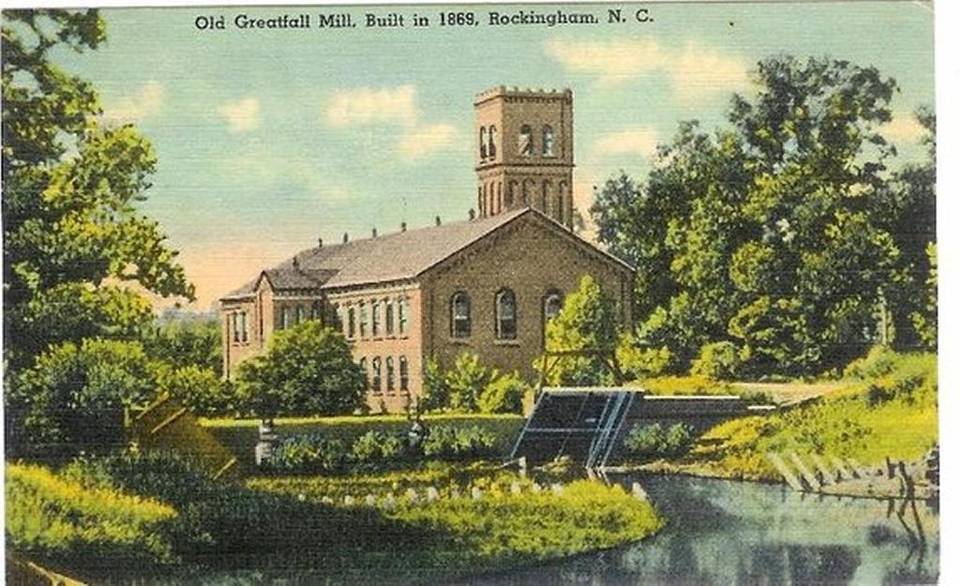
The last stop in North Carolina was Rockingham which seemed to be another down-on-its-luck mill town. In the set below you will see an “after” picture of the Great Falls Mill in Rockingham; the vintage postcard above is the “before” picture when it had not yet become an industrial ruin. I didn’t linger in Rockingham and instead headed for the state line.
My first destination in South Carolina was Cheraw, on the Pee Dee River in Chesterfield County.
Why Cheraw? For one thing, it was the birthplace of jazz great Dizzy Gillespie (John Birks Gillespie, born in Cheraw on Oct. 21, 1917, the ninth and last child of James and Lottie Gillespie). That alone called for a visit. The house where the family lived does not exist anymore; there’s a sweet little park, the Gillespie Home Site Park, and a South Carolina historic marker where the Gillespies once lived.

For another, Cheraw is one of the oldest inland towns in South Carolina. The guidebook said it is called the “Prettiest Town in Dixie”. I am not sure about that (there’s a lot of competition), but it is indeed a very attractive little town with some lovely homes. In the set below is Old St. David’s Episcopal Church (c. 1770), which is said to be the last church built in South Carolina under King George III. It was used by the Americans and the British during the Revolution and later on by both Confederate and Union armies during the Civil War. Soldiers from almost every American war are buried in the church cemetery.
Another longer visit on my way south was Camden, in Kershaw County, also known as the ‘”Steeplechase Capital of the World”.
It’s another pretty Southern town which seems to be quite the survivor. The Battle of Camden, said to be the worst American defeat of the Revolutionary War, was fought on August 16, 1780, near Camden. Later following heavy losses in the Battle of Hobkirk Hill in 1781, the English finally surrendered their hold on Camden, but not before burning most of the town as they left. Later it was occupied and burned by General William Tecumseh Sherman’s Union troops in February 1865. Whew!
In the horseracing world Camden’s Springdale Race Course is well known and is the site of the annual Carolina Cup and Marion duPont Scott Colonial Cup steeplechases. I drove out to the race course and walked around the steeplechase museum there. Camden has many fine historic houses. The Kershaw-Cornwallis House below in this set served as headquarters for General Cornwallis during the English occupation of Camden. I read that after the Civil War Camden became a popular destination for wealthy northern families to spend the winter, and this would explain its prominence as an equestrian center and the “moneyed” look of the place. It has one of the oldest polo fields in the country. I had an enjoyable walkabout at the Historic Camden Revolutionary War Site.
We’ll do a few more stops along the way as we get closer to Summerville and Charleston. I didn’t spend much time in Orangeburg – it was a quick detour to see the historic parts in the central city. The old pecan processing facility (“put some south in yo mouth” is the company’s slogan) caught my eye, and I stopped for a photo and before driving on.
Summerville was a most enjoyable visit. It has a pretty impressive collection of historic houses in some beautiful residential neighborhoods. I have included some shots from my walks in the set. According to the discoversouthcarolina website, some 700 buildings in Summerville are listed on the National Register of Historic Places. That’s a big number. Like nearby Charleston it is hugely historic.
On two different visits over the last couple of years – this spring and spring 2015 – I enjoyed the warm hospitality in Summerville of two dear friends (and former neighbors) from Berkeley, California, for which I greatly thank them.
We are in the Deep South now. It looks different, and it feels different.

Just up the road from Summerville is another top five BBQ place, Duke’s, which was recommended by my friends. I can assure you I was the only non-local there. Summerville apparently lays claim to the title of “Birthplace of Sweet Tea” – there was no shortage of sweet tea at Duke’s. At about half the tables was a group mostly still in camouflage back from Saturday hunting. Seating was family style at long tables crammed full of people. It’s all you can eat, and all the food is at a buffet. It’s a family owned place open only three days a week, and they only take cash. Get a fresh plate if you are going back for more, and try not to hold up the line. It’s absolutely incredible fried chicken. Very good banana pudding, too. Adults are $10 and children up to age 9 are $5. It was a down-home southern dining experience like I had never experienced before. (I had a similar culinary experience on the return drive up the South Carolina coast on Pawleys Island – that’s a later post after Charleston!)
 I loved the farmers’ market in Summerville which is walkable from my friends’ house nearby. In one of the photos is a Summerville local named Butch Chastain, a/k/a the Flying Farmer, USAF (Ret). He does “Flying Farmer Grits & Meal” and brings along a 1917 grits mill powered by an only slightly newer engine from 1925. We had a good chat. Big Daddy — also known as Mark Phoenix – is another regular and fries up the pork skins right at the market. Plenty of sweets, that’s for sure. As I said, we are in the Deep South now…
I loved the farmers’ market in Summerville which is walkable from my friends’ house nearby. In one of the photos is a Summerville local named Butch Chastain, a/k/a the Flying Farmer, USAF (Ret). He does “Flying Farmer Grits & Meal” and brings along a 1917 grits mill powered by an only slightly newer engine from 1925. We had a good chat. Big Daddy — also known as Mark Phoenix – is another regular and fries up the pork skins right at the market. Plenty of sweets, that’s for sure. As I said, we are in the Deep South now…
The city was a fantastic base for exploring South Carolina’s Lowcountry – Charleston, the Ashley River plantations and much more. We’ll do just that in the next couple of posts.
Click on (or tap) an image to expand it (and use the arrow to the right on an expanded image to go through the set, if preferred over scrolling down in the post).

In the Pee Dee River country. First United Methodist Church (est. 1828), Mount Gilead, Montgomery County, North Carolina.

In the Piedmont. Stopping for BBQ at Lefler’s Place Cafe and Grocery, Mount Gilead, Montgomery County, North Carolina.

In the Pee Dee River country. Jimmy Anderson, Lefler’s Place Cafe and Grocery, Mount Gilead, Montgomery County, North Carolina.

In the Pee Dee River country. Great Falls Mill ruins, Rockingham in Richmond County, North Carolina.

Old St. David's Episcopal Church (c. 1770), Cheraw on the Pee Dee River in Chesterfield County, South Carolina
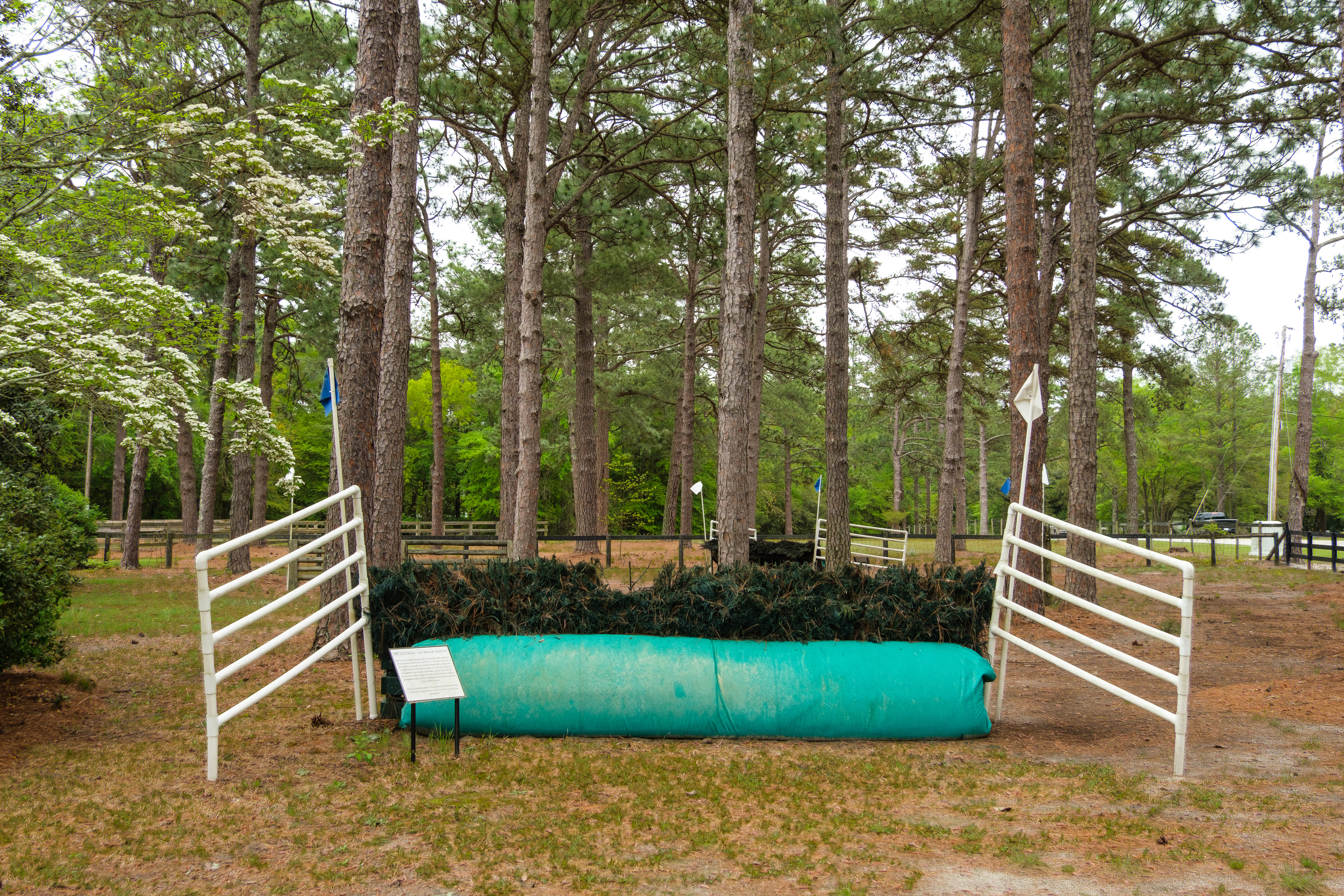
National Steeplechase Museum at the Springdale Race Course, Camden in Kershaw County, South Carolina
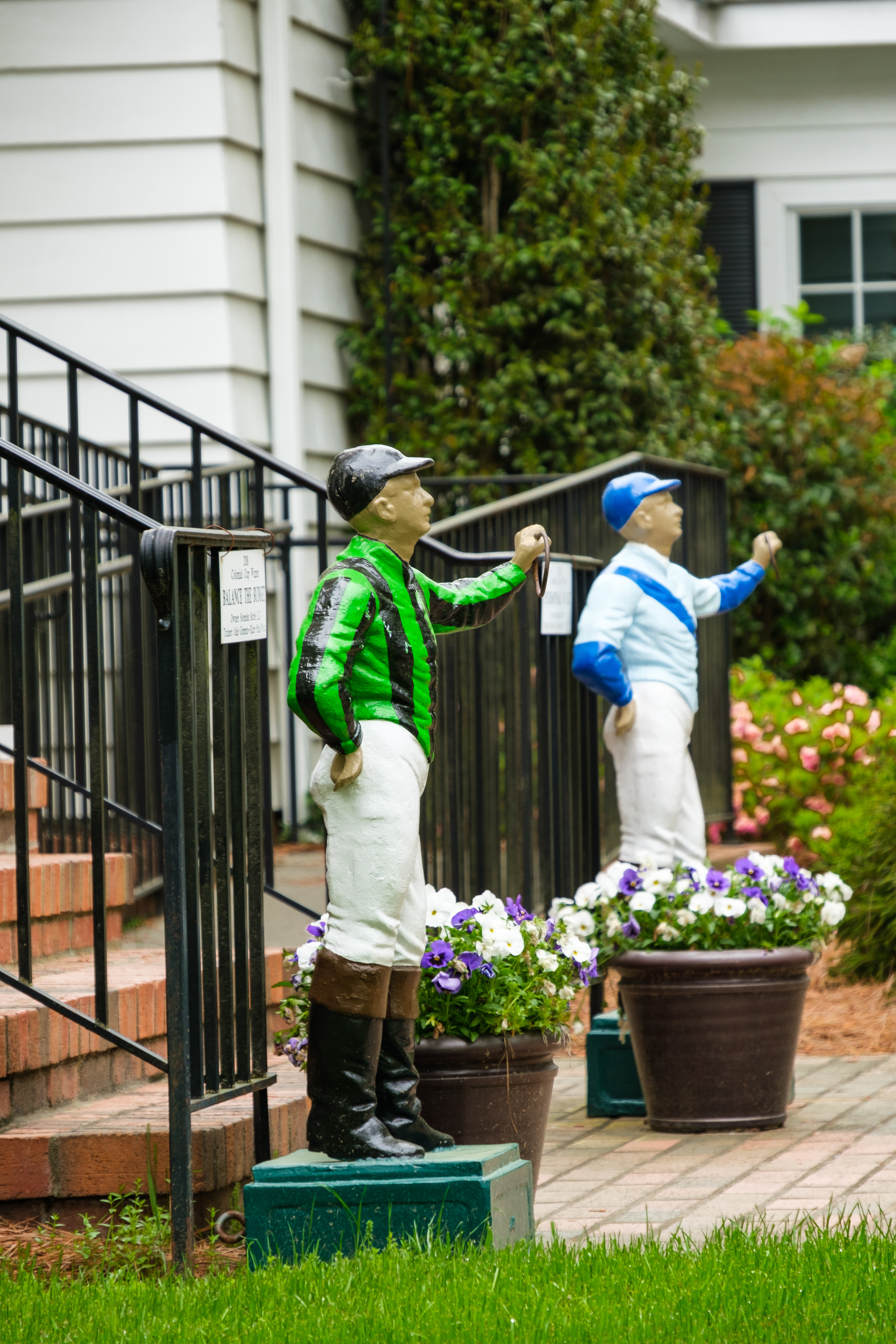
National Steeplechase Museum at the Springdale Race Course, Camden in Kershaw County, South Carolina

